Did you recently hear that NASA changed the zodiac signs? Nope, we definitely didn’t…
Here at NASA, we study astronomy, not astrology. We didn’t change any zodiac signs, we just did the math. Here are the details:
First Things First: Astrology is not Astronomy…
Astronomy is the scientific study of everything in outer space. Astronomers and other scientists know that stars many light-years away have no effect on the ordinary activities of humans on Earth.
Astrology, meanwhile, is something else. It’s the belief that the positions of stars and planets can influence human events. It’s not considered a science.

Some curious symbols ring the outside of the Star Finder. These symbols stand for some of the constellations in the zodiac. What is the zodiac and what is special about these constellations?
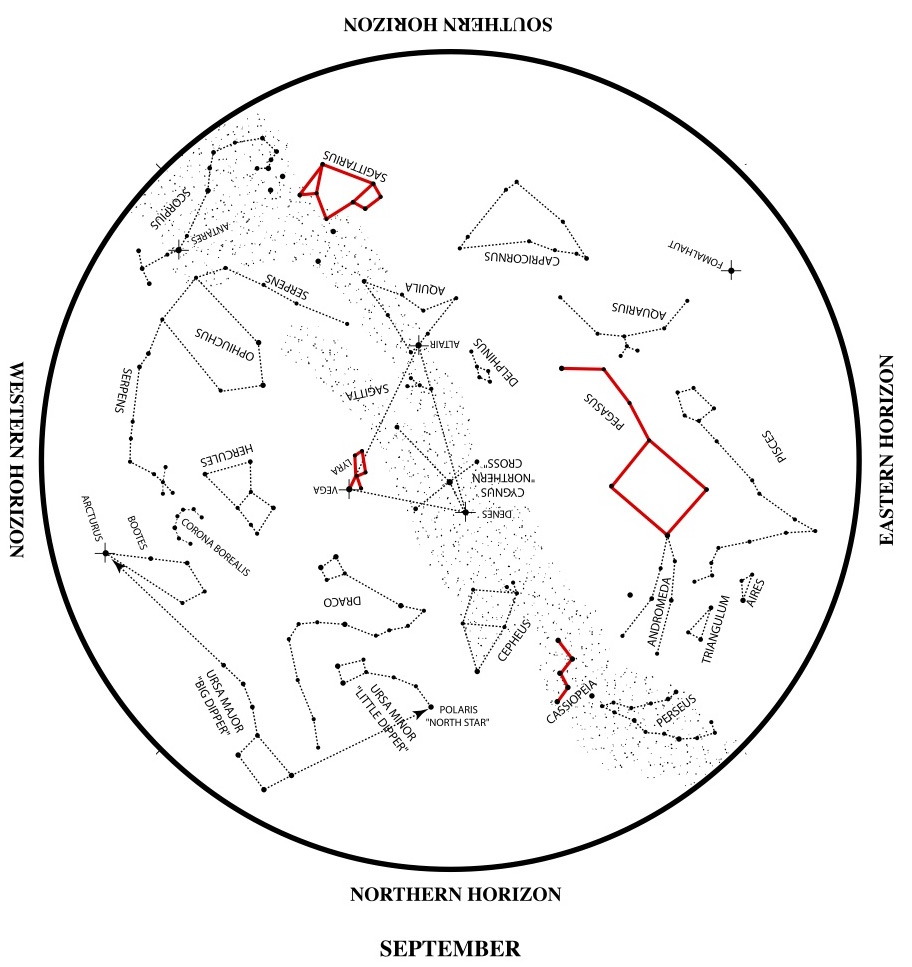
Imagine a straight line drawn from Earth though the sun and out into space way beyond our solar system where the stars are. Then, picture Earth following its orbit around the sun. This imaginary line would rotate, pointing to different stars throughout one complete trip around the sun – or, one year. All the stars that lie close to the imaginary flat disk swept out by this imaginary line are said to be in the zodiac.

The constellations in the zodiac are simply the constellations that this imaginary straight line points to in its year-long journey.
What are Constellations?
A constellation is group of stars like a dot-to-dot puzzle. If you join the dots—stars, that is—and use lots of imagination, the picture would look like an object, animal, or person. For example, Orion is a group of stars that the Greeks thought looked like a giant hunter with a sword attached to his belt. Other than making a pattern in Earth’s sky, these stars may not be related at all.

Even the closest star is almost unimaginably far away. Because they are so far away, the shapes and positions of the constellations in Earth’s sky change very, very slowly. During one human lifetime, they change hardly at all.
A Long History of Looking to the Stars
The Babylonians lived over 3,000 years ago. They divided the zodiac into 12 equal parts – like cutting a pizza into 12 equal slices. They picked 12 constellations in the zodiac, one for each of the 12 “slices.” So, as Earth orbits the sun, the sun would appear to pass through each of the 12 parts of the zodiac. Since the Babylonians already had a 12-month calendar (based on the phases of the moon), each month got a slice of the zodiac all to itself.
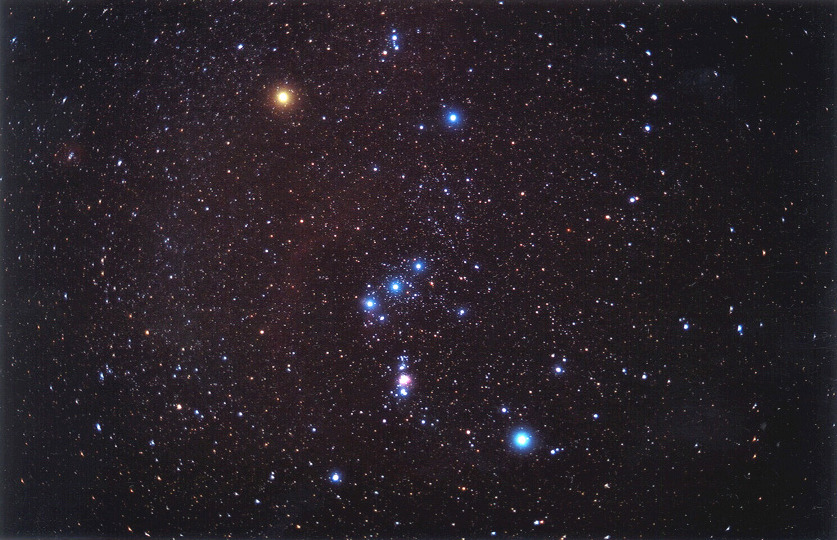
But even according to the Babylonians’ own ancient stories, there were 13 constellations in the zodiac. So they picked one, Ophiuchus, to leave out. Even then, some of the chosen 12 didn’t fit neatly into their assigned slice of the pie and crossed over into the next one.
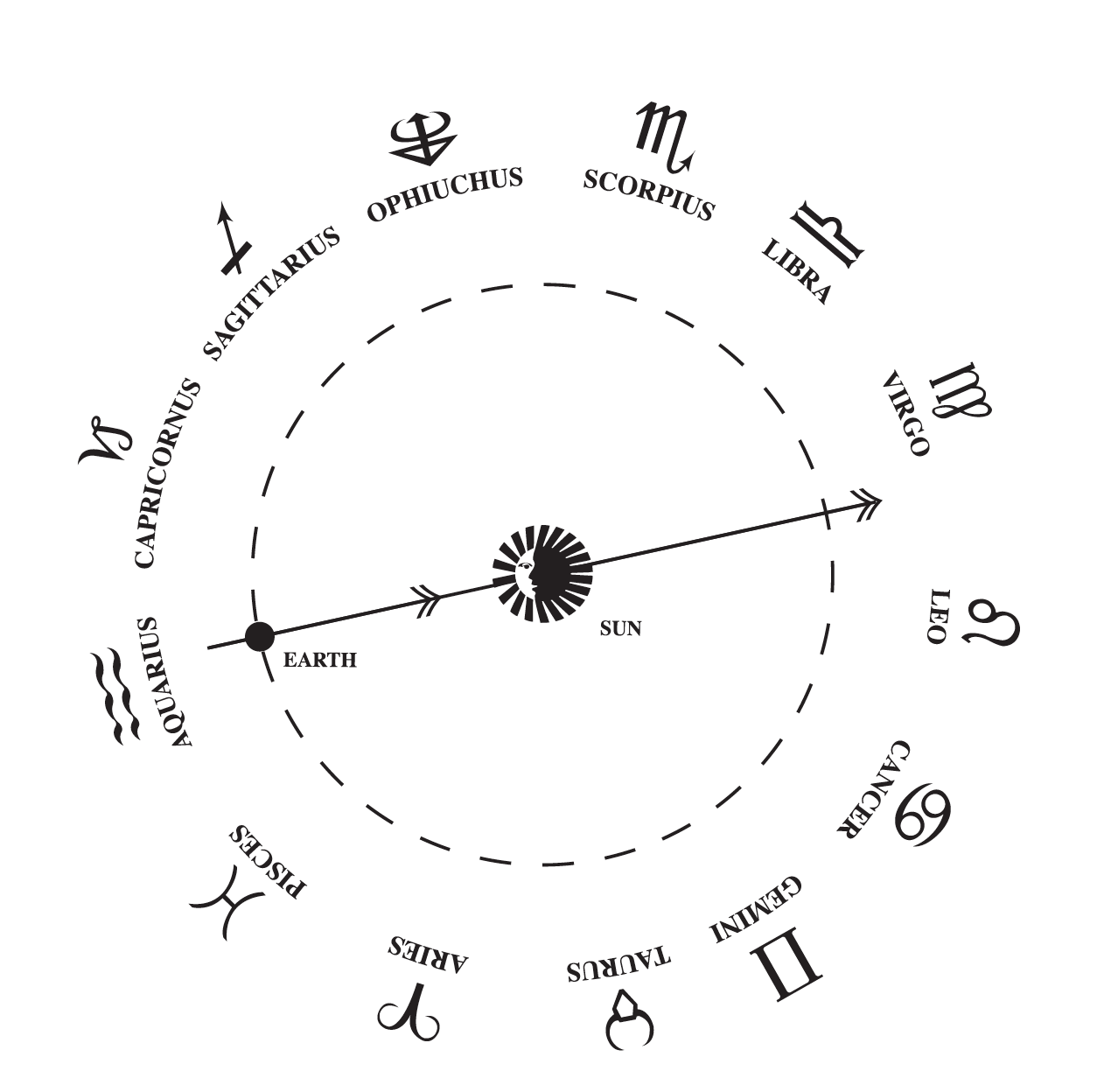
When the Babylonians first invented the 12 signs of zodiac, a birthday between about July 23 and August 22 meant being born under the constellation Leo. Now, 3,000 years later, the sky has shifted because Earth’s axis (North Pole) doesn’t point in quite the same direction.
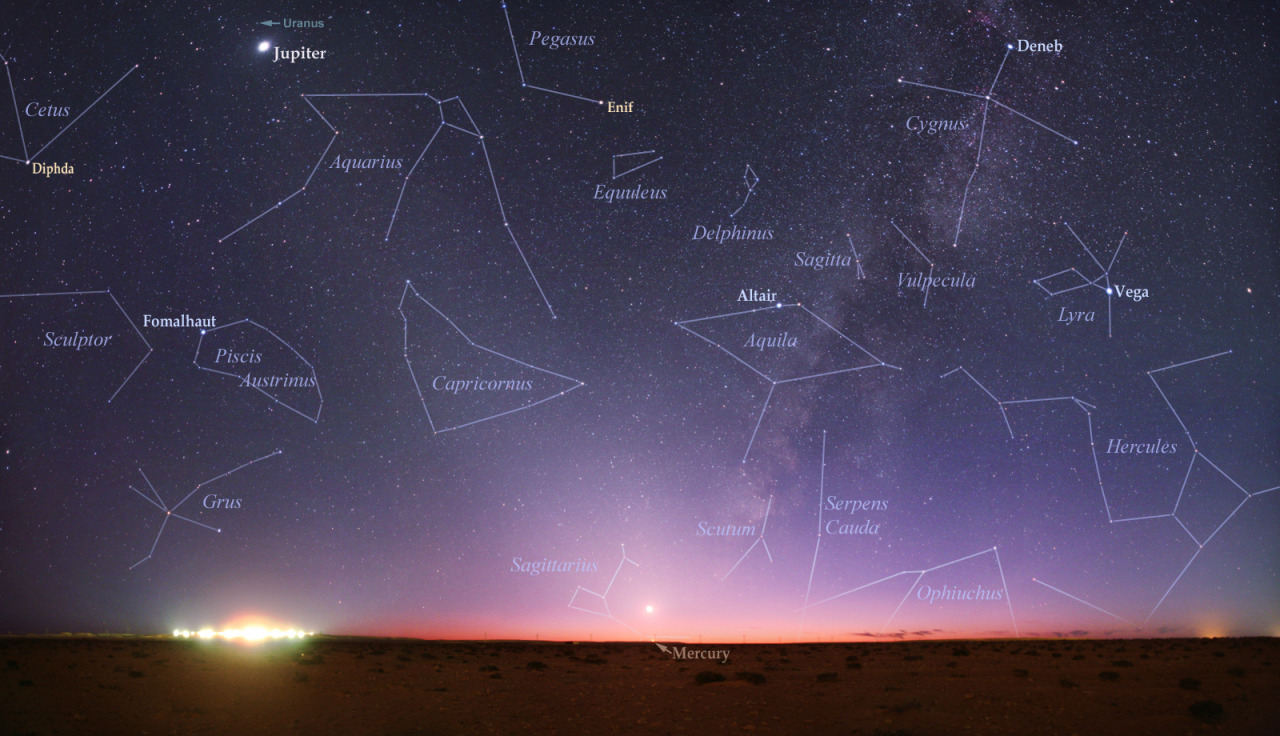
The constellations are different sizes and shapes, so the sun spends different lengths of time lined up with each one. The line from Earth through the sun points to Virgo for 45 days, but it points to Scorpius for only 7 days. To make a tidy match with their 12-month calendar, the Babylonians ignored the fact that the sun actually moves through 13 constellations, not 12. Then they assigned each of those 12 constellations equal amounts of time.
So, we didn’t change any zodiac signs…we just did the math.
Make sure to follow us on Tumblr for your regular dose of space: http://nasa.tumblr.com
Source: spaceplace.nasa.govnasaspacezodiacconstellationstarsskyastronomy
SEE MORE POSTS LIKE THIS ON TUMBLR #nasa#space#zodiac#constellation#stars#sky#astronomy
MORE YOU MIGHT LIKE
Discovering the Universe Through the Constellation Orion
Do you ever look up at the night sky and get lost in the stars? Maybe while you’re stargazing, you spot some of your favorite constellations. But did you know there’s more to constellations than meets the eye? They’re not just a bunch of imaginary shapes made up of stars — constellations tell us stories about the universe from our perspective on Earth.
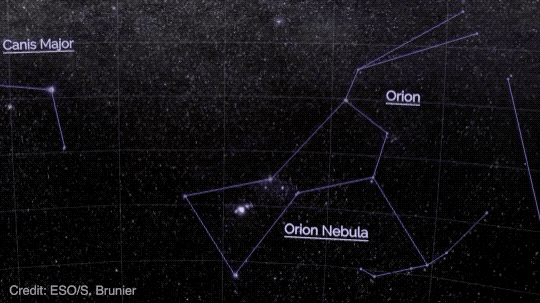
What is a constellation?
Aconstellation is a named pattern of stars that looks like a particular shape. Think of it like connecting the dots. If you join the dots — stars, in this case — and use your imagination, the picture would look like an object, animal, or person. For example, the ancient Greeks believed an arrangement of stars in the sky looked like a giant hunter with a sword attached to his belt, so they named it after a famous hunter in their mythology, Orion. It’s one of the most recognizable constellations in the night sky and can be seen around the world. The easiest way to find Orion is to go outside on a clear night and look for three bright stars close together in an almost-straight line. These three stars represent Orion’s belt. Two brighter stars to the north mark his shoulders, and two more to the south represent his feet.
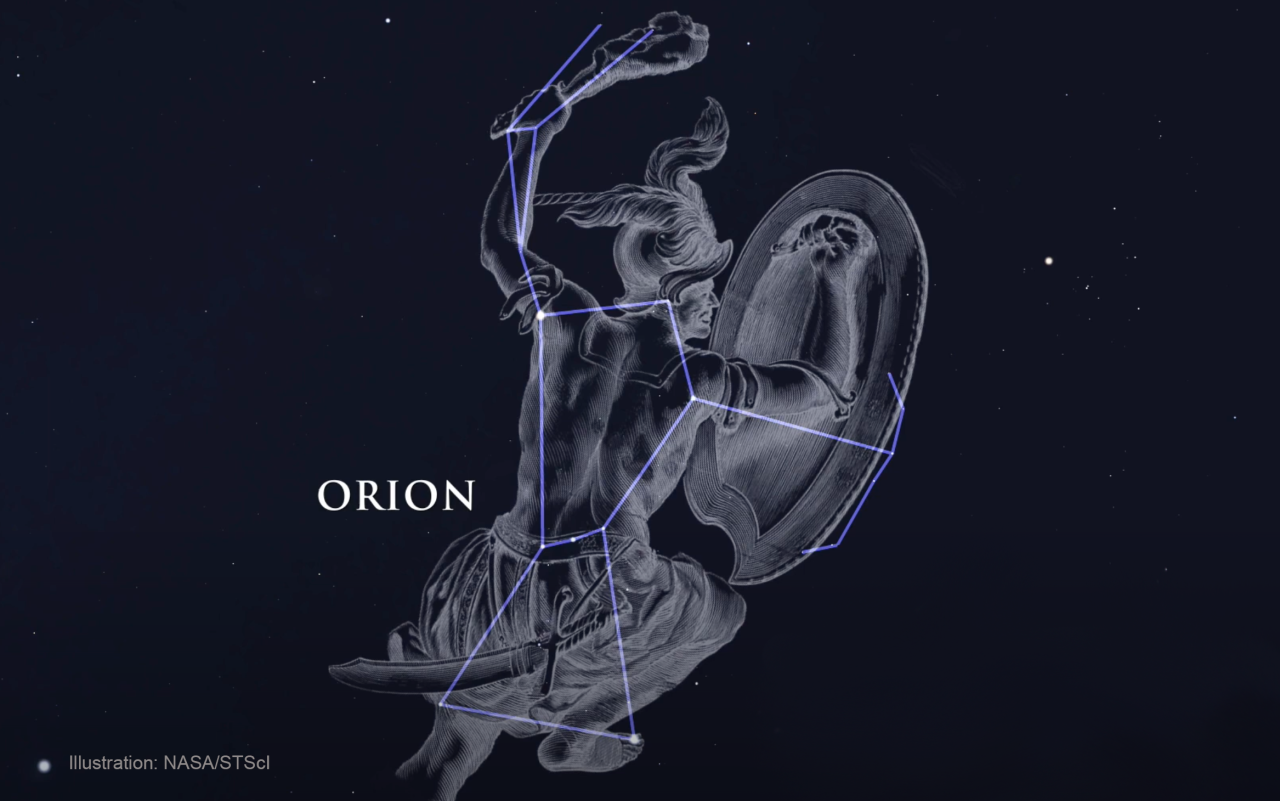
Over time, cultures around the world have had different names and numbers of constellations depending on what people thought they saw. Today, there are 88 officially recognized constellations. Though these constellations are generally based on what we can see with our unaided eyes, scientists have also invented unofficial constellations for objects that can only be seen in gamma rays, the highest-energy form of light.
Perspective is everything
The stars in constellations may look close to each other from our point of view here on Earth, but in space they might be really far apart. For example, Alnitak, the star at the left side of Orion’s belt, is about 800 light-years away. Alnilam, the star in the middle of the belt, is about 1,300 light-years away. And Mintaka, the star at the right side of the belt, is about 900 light-years away. Yet they all appear from Earth to have the same brightness. Space is three-dimensional, so if you were looking at the stars that make up the constellation Orion from another part of our galaxy, you might see an entirely different pattern!
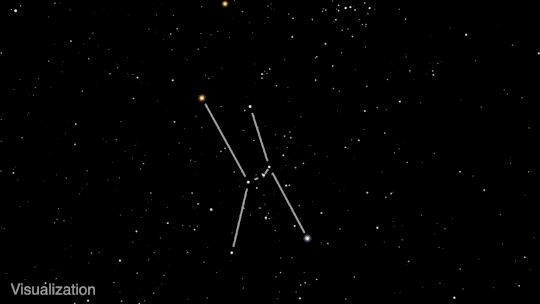
The superstars of Orion
Now that we know a little bit more about constellations, let’s talk about the supercool cosmic objects that form them – stars! Though over a dozen stars make up Orion, two take center stage. The red supergiant Betelgeuse (Orion’s right shoulder) and blue supergiant Rigel (Orion’s left foot) stand out as the brightest members in the constellation.
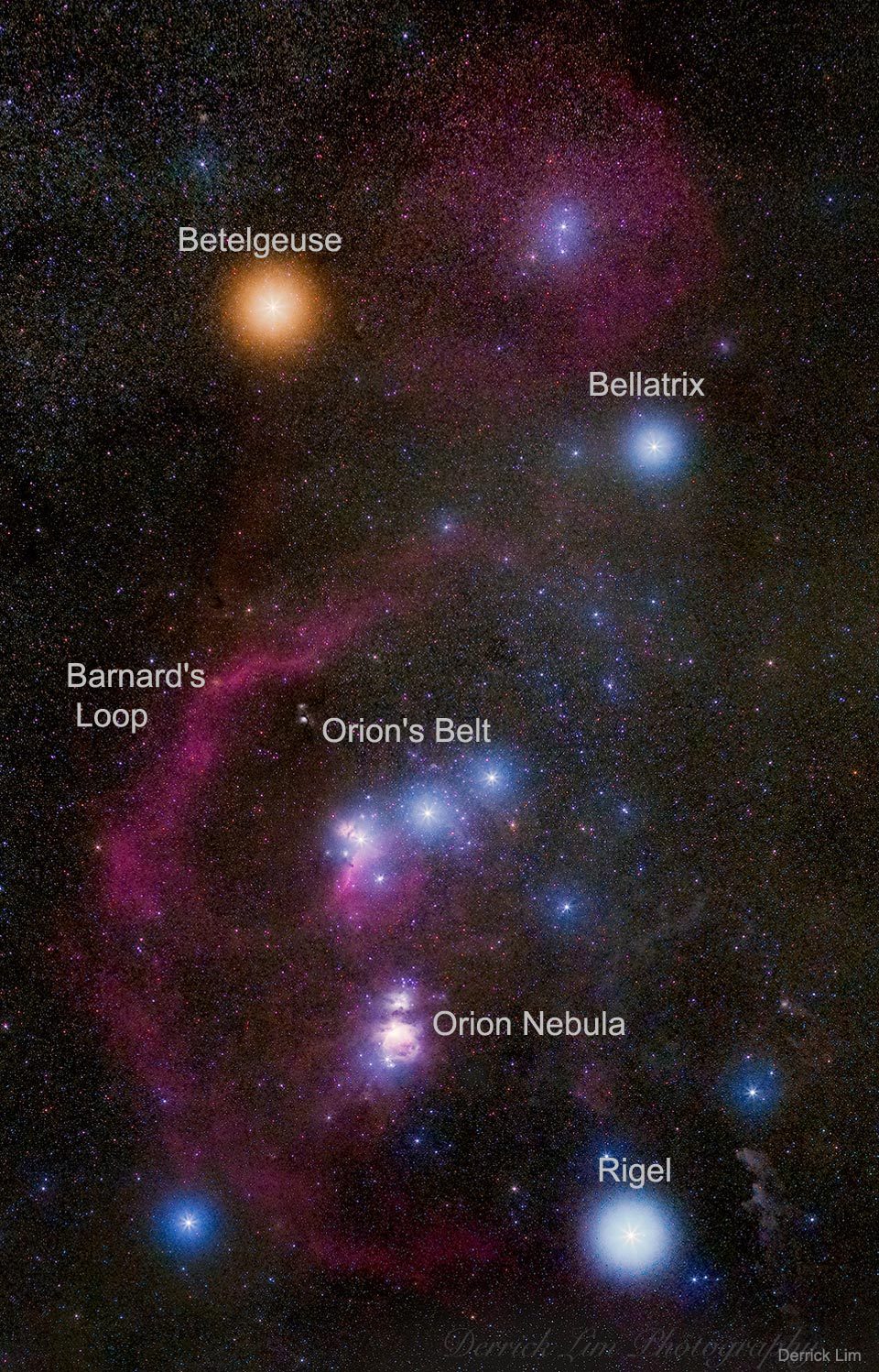
Credit: Derrick Lim
Betelgeuse is a young star by stellar standards, about 10 million years old, compared to our nearly 5 billion-year-old Sun. The star is so huge that if it replaced the Sun at the center of our solar system, it would extend past the main asteroid belt between Mars and Jupiter! But due to its giant mass, it leads a fast and furious life.
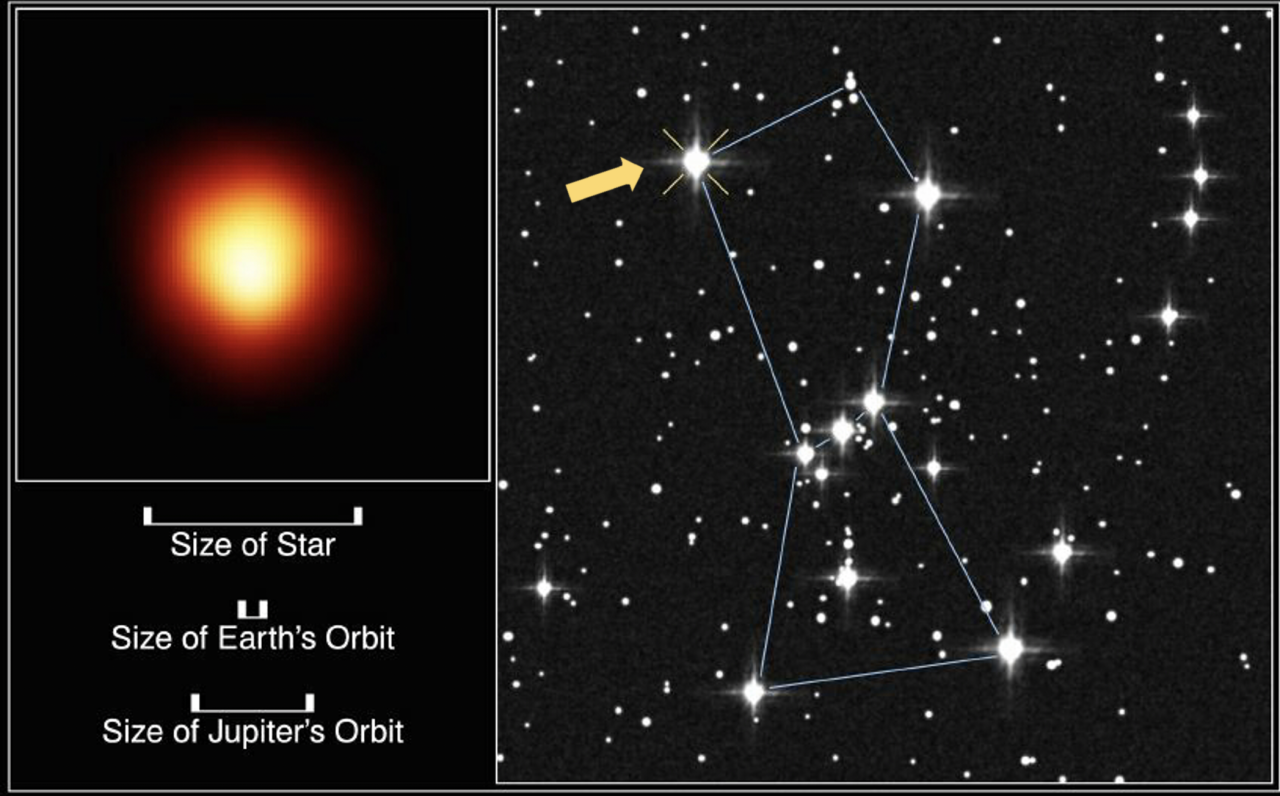
Betelgeuse is destined to end in a supernova blast. Scientists discovered a mysterious dimming of Betelgeuse in late 2019 caused by a traumatic outburst that some believed was a precursor to this cosmic event. Though we don’t know if this incident is directly related to an imminent supernova, there’s a tiny chance it might happen in your lifetime. But don’t worry, Betelgeuse is about 550 light-years away, so this event wouldn’t be dangerous to us – but it would be a spectacular sight.
Rigel is also a young star, estimated to be 8 million years old. Like Betelgeuse, Rigel is much larger and heavier than our Sun. Its surface is thousands of degrees hotter than Betelgeuse, though, making it shine blue-white rather than red. These colors are even noticeable from Earth. Although Rigel is farther from Earth than Betelgeuse (about 860 light-years away), it is intrinsically brighter than its companion, making it the brightest star in Orion and one of the brightest stars in the night sky.
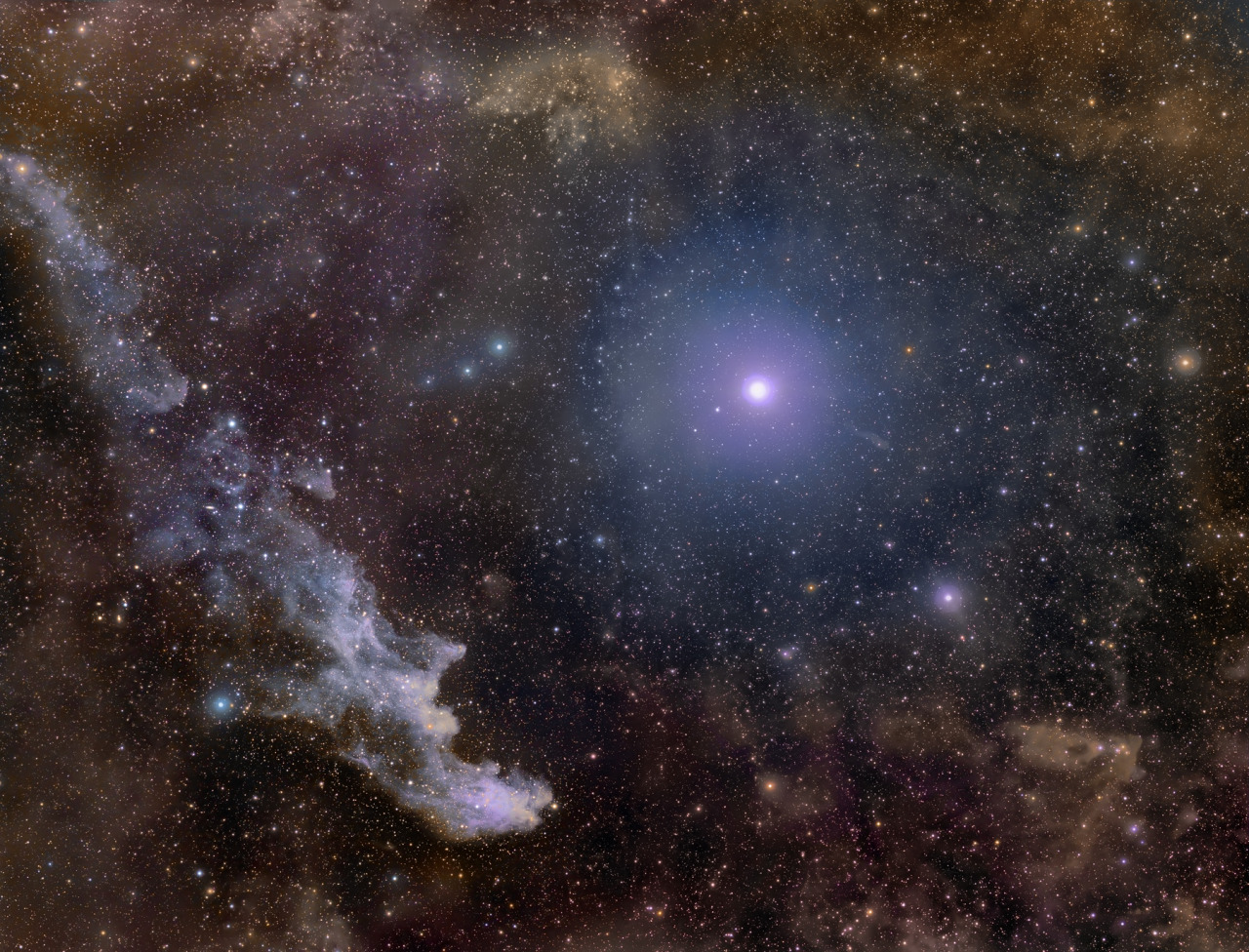
Credit: Rogelio Bernal Andreo
Buckle up for Orion’s belt
Some dots that make up constellations are actually more than one star, but from a great distance they look like a single object. Remember Mintaka, the star at the far right side of Orion’s belt? It is not just a single star, but actually five stars in a complex star system.
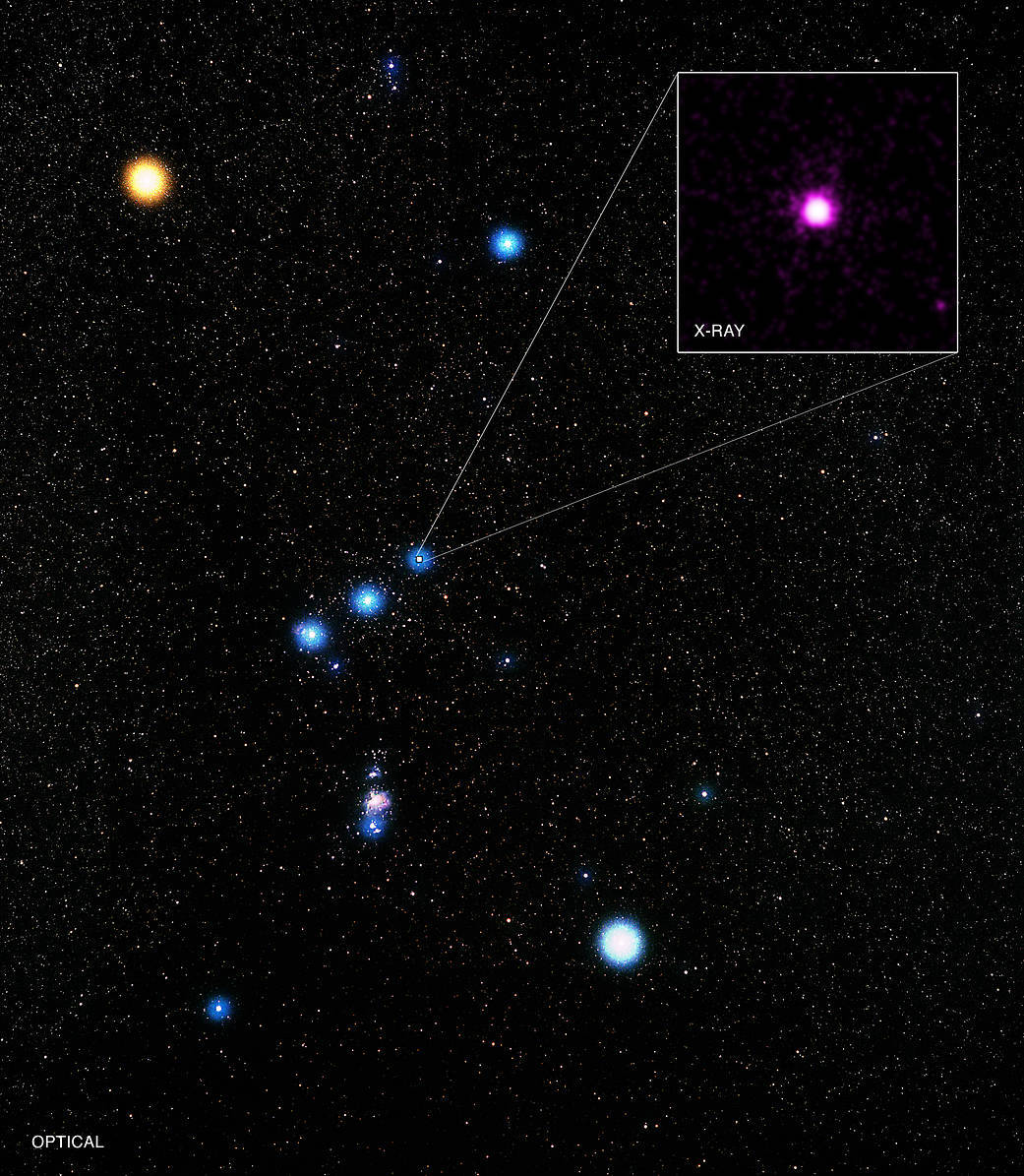
Credit: X-ray: NASA/CXC/GSFC/M. Corcoran et al.; Optical: Eckhard Slawik
Sword or a stellar nursery?
Below the three bright stars of Orion’s belt lies his sword, where you can find the famous Orion Nebula. The nebula is only 1,300 light-years away, making it the closest large star-forming region to Earth. Because of its brightness and prominent location just below Orion’s belt, you can actually spot the Orion Nebula from Earth! But with a pair of binoculars, you can get a much more detailed view of the stellar nursery. It’s best visible in January and looks like a fuzzy “star” in the middle of Orion’s sword.
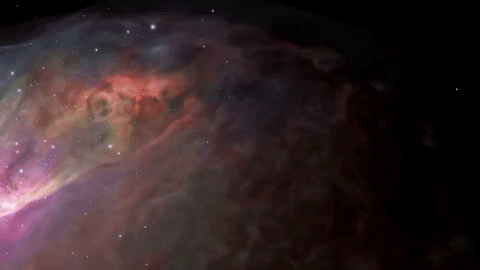
More to discover in constellations
In addition to newborn stars, Orion also has some other awesome cosmic objects hanging around. Scientists have discovered exoplanets, or planets outside of our solar system, orbiting stars there. One of those planets is a giant gas world three times more massive than Jupiter. It’s estimated that on average there is at least one planet for every star in our galaxy. Just think of all the worlds you may be seeing when you look up at the night sky!
It’s also possible that the Orion Nebula might be home to a black hole, making it the closest known black hole to Earth. Though we may never detect it, because no light can escape black holes, making them invisible. However, space telescopes with special instruments can help find black holes. They can observe the behavior of material and stars that are very close to black holes, helping scientists find clues that can lead them closer to discovering some of these most bizarre and fascinating objects in the cosmos.
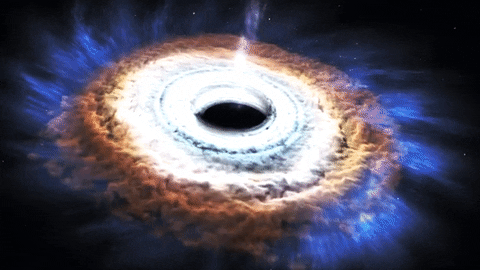
Next time you go stargazing, remember that there’s more to the constellations than meets the eye. Let them guide you to some of the most incredible and mysterious objects of the cosmos — young stars, brilliant nebulae, new worlds, star systems, and even galaxies!
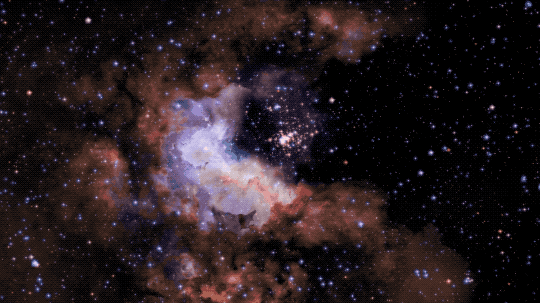
To keep up with the most recent stellar news, follow NASA Universe on Twitter and Facebook.
Make sure to follow us on Tumblr for your regular dose of space! NASAspacescienceconstellationsOrionorion constellationstarsgalaxiesuniversesolar systemastronomyfun factsblack holesstargazingnight sky
Sixteen Images for Spitzer’s Sweet 16! 🎂
We launched our Spitzer Space Telescope into orbit around the Sunday on Aug. 25, 2003. Since then, the observatory has been lifting the veil on the wonders of the cosmos, from our own solar system to faraway galaxies, using infrared light.
Thanks to Spitzer, scientists were able to confirm the presence of seven rocky, Earth-size planets in the TRAPPIST-1 system. The telescope has also provided weather maps of hot, gaseous exoplanets and revealed a hidden ring around Saturn. It has illuminated hidden collections of dust in a wide variety of locations, including cosmic nebulas (clouds of gas and dust in space), where young stars form, and swirling galaxies. Spitzer has additionally investigated some of the universe’s oldest galaxies and stared at the black hole at the center of the Milky Way.
In honor of Spitzer’s Sweet 16 in space, here are 16 amazing images from the mission.
Giant Star Makes Waves
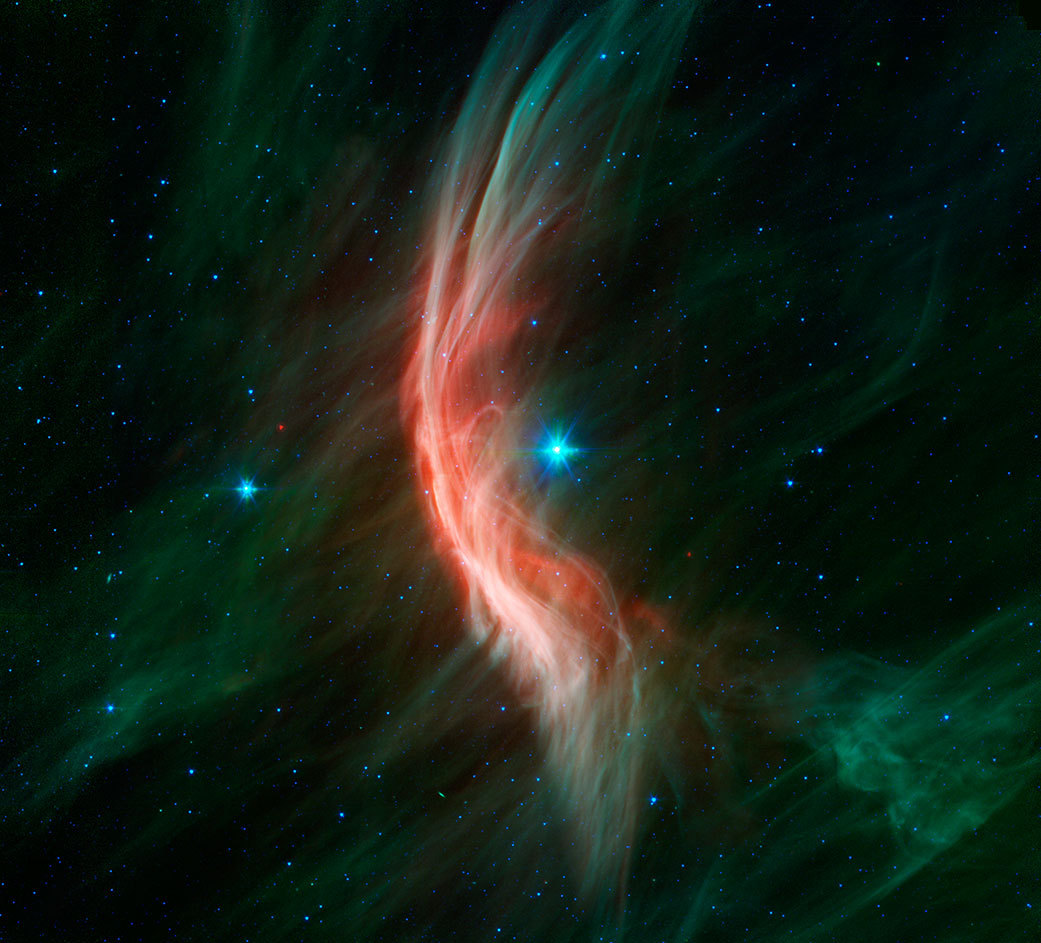
This Spitzer image shows the giant star Zeta Ophiuchi and the bow shock, or shock wave, in front of it. Visible only in infrared light, the bow shock is created by winds that flow from the star, making ripples in the surrounding dust.
The Seven Sisters Pose for Spitzer
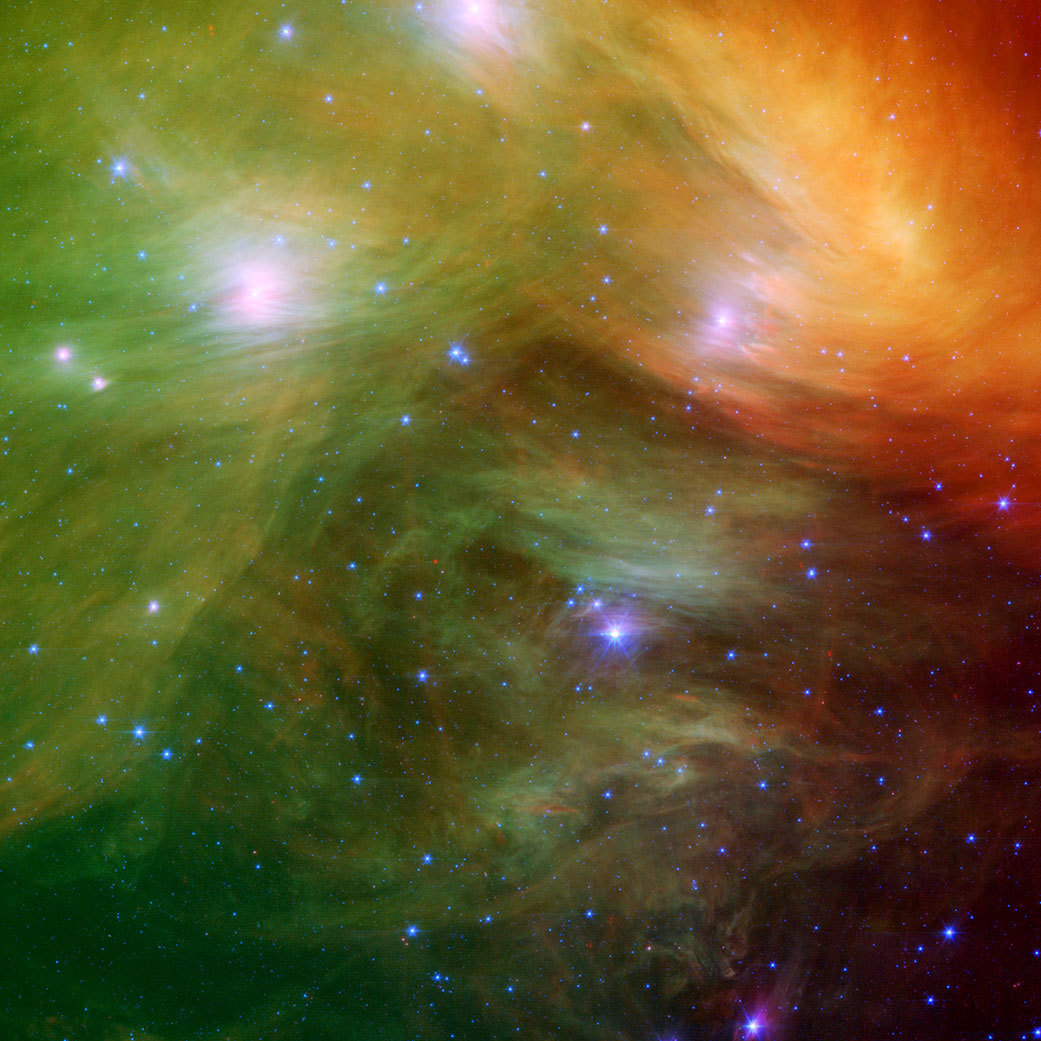
The Pleiades star cluster, also known as the Seven Sisters, is a frequent target for night sky observers. This image from Spitzer zooms in on a few members of the sisterhood. The filaments surrounding the stars are dust, and the three colors represent different wavelengths of infrared light.
Young Stars in Their Baby Blanket of Dust
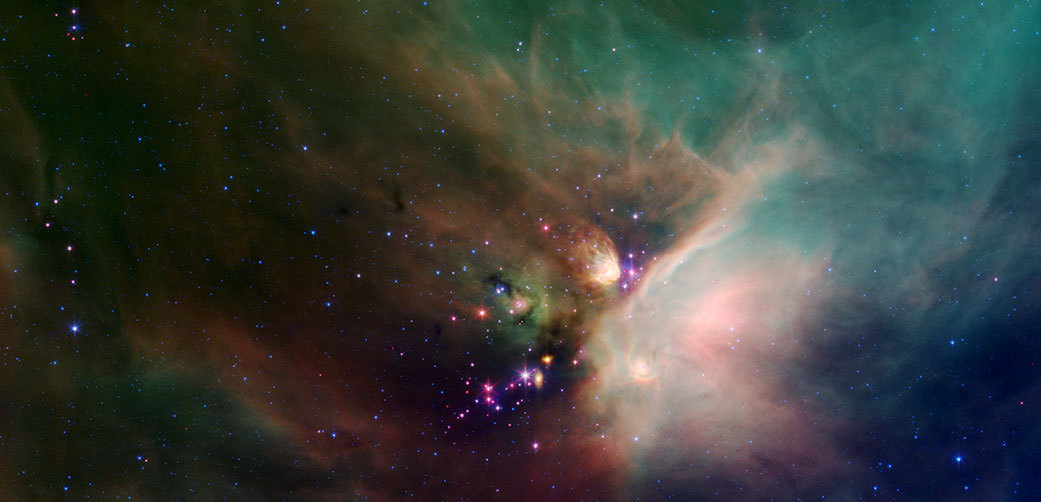
Newborn stars peek out from beneath their blanket of dust in this image of the Rho Ophiuchi nebula. Called “Rho Oph” by astronomers and located about 400 light-years from Earth, it’s one of the closest star-forming regions to our own solar system.
The youngest stars in this image are surrounded by dusty disks of material from which the stars — and their potential planetary systems — are forming. More evolved stars, which have shed their natal material, are blue.
The Infrared Helix
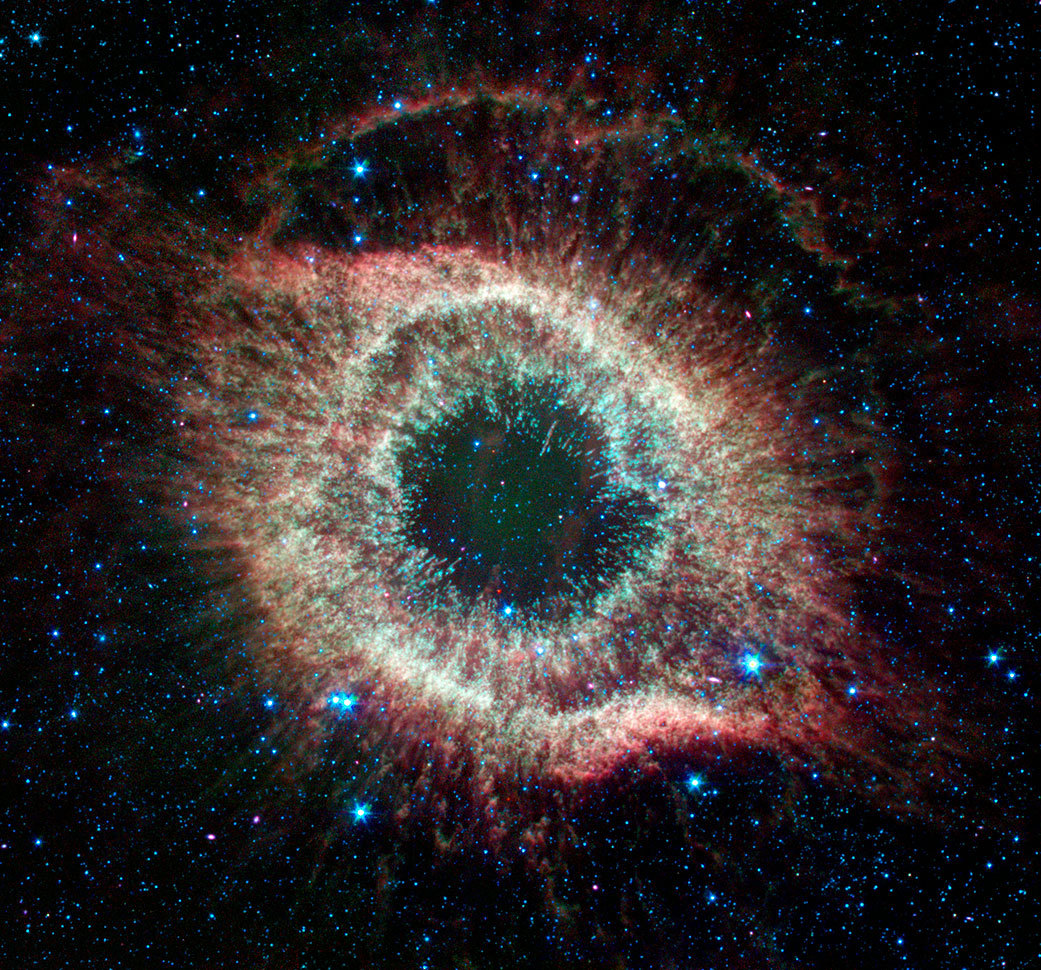
Located about 700 light-years from Earth, the eye-like Helix nebula is a planetary nebula, or the remains of a Sun-like star. When these stars run out of their internal fuel supply, their outer layers puff up to create the nebula. Our Sun will blossom into a planetary nebula when it dies in about 5 billion years.
The Tortured Clouds of Eta Carinae
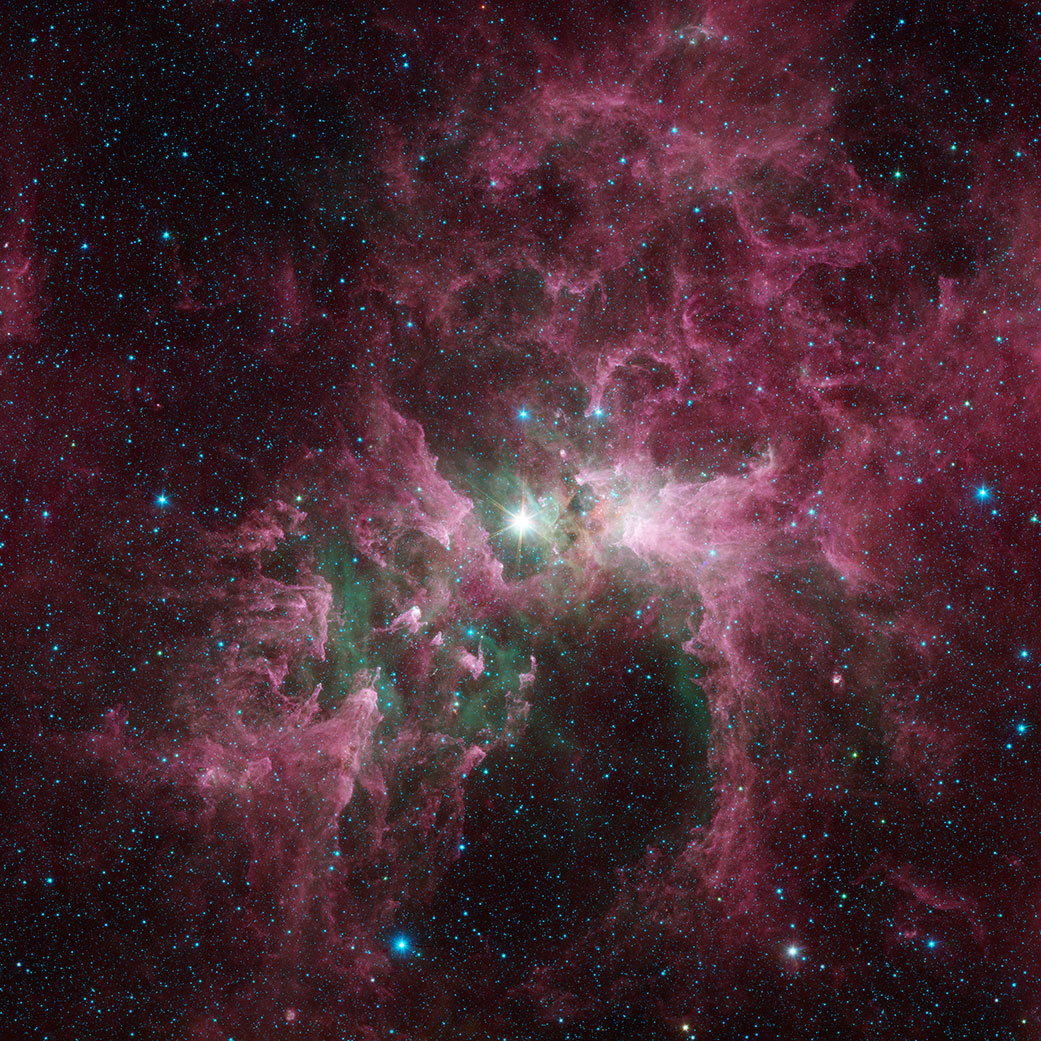
The bright star at the center of this image is Eta Carinae, one of the most massive stars in the Milky Way galaxy. With around 100 times the mass of the Sun and at least 1 million times the brightness, Eta Carinae releases a tremendous outflow of energy that has eroded the surrounding nebula.
Spitzer Spies Spectacular Sombrero
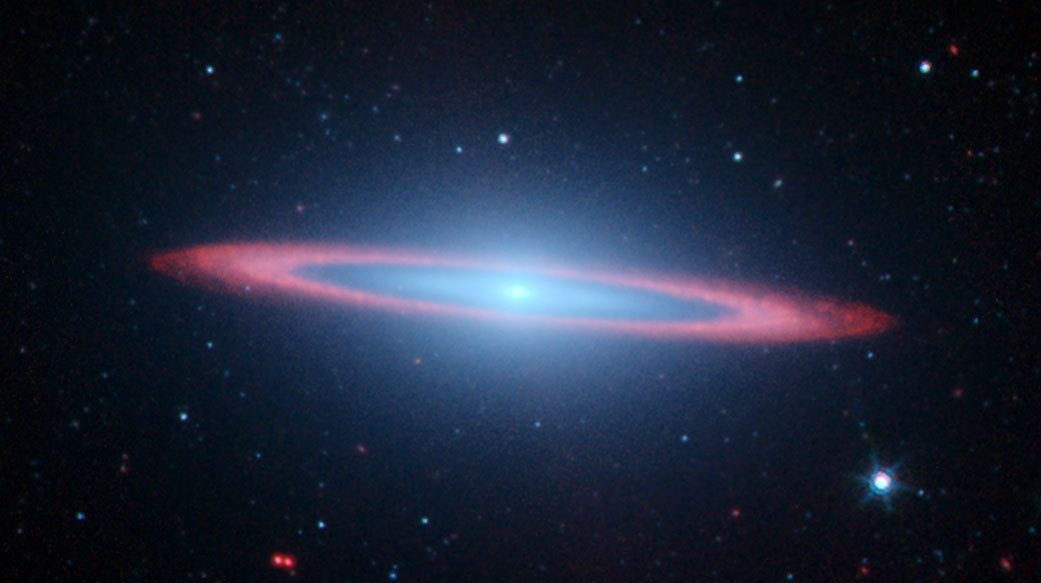
Located 28 million light-years from Earth, Messier 104 — also called the Sombrero galaxy or M104 — is notable for its nearly edge-on orientation as seen from our planet. Spitzer observations were the first to reveal the smooth, bright ring of dust (seen in red) circling the galaxy.
Spiral Galaxy Messier 81
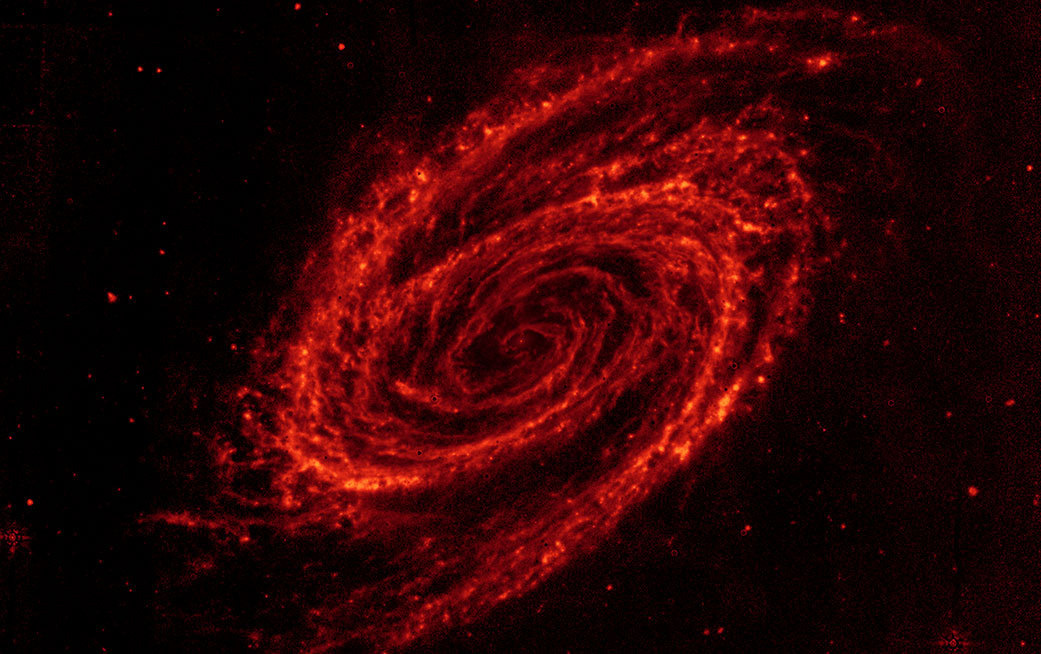
This infrared image of the galaxy Messier 81, or M81, reveals lanes of dust illuminated by active star formation throughout the galaxy’s spiral arms. Located in the northern constellation of Ursa Major (which includes the Big Dipper), M81 is also about 12 million light-years from Earth.
Spitzer Reveals Stellar Smoke
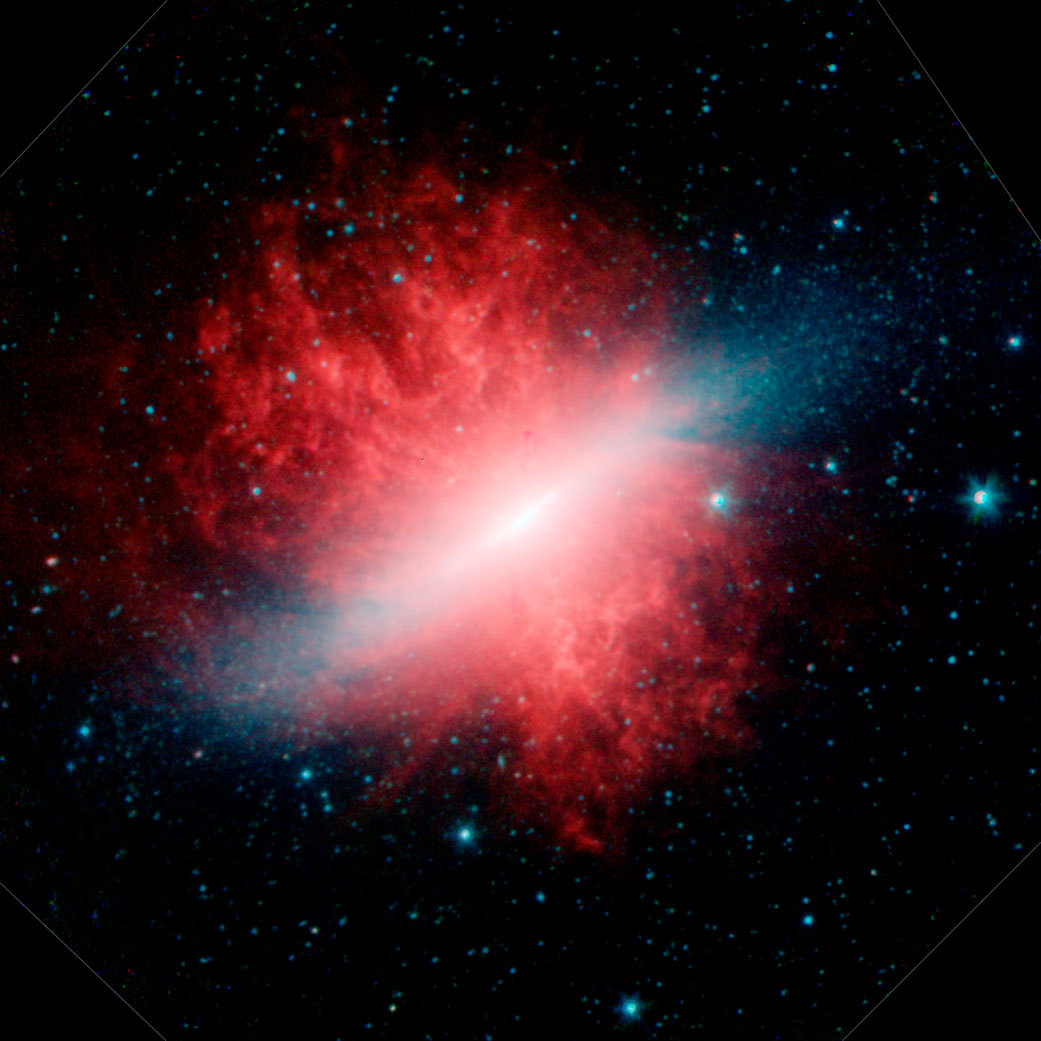
Messier 82 — also known as the Cigar galaxy or M82 — is a hotbed of young, massive stars. In visible light, it appears as a diffuse bar of blue light, but in this infrared image, scientists can see huge red clouds of dust blown out into space by winds and radiation from those stars.
A Pinwheel Galaxy Rainbow
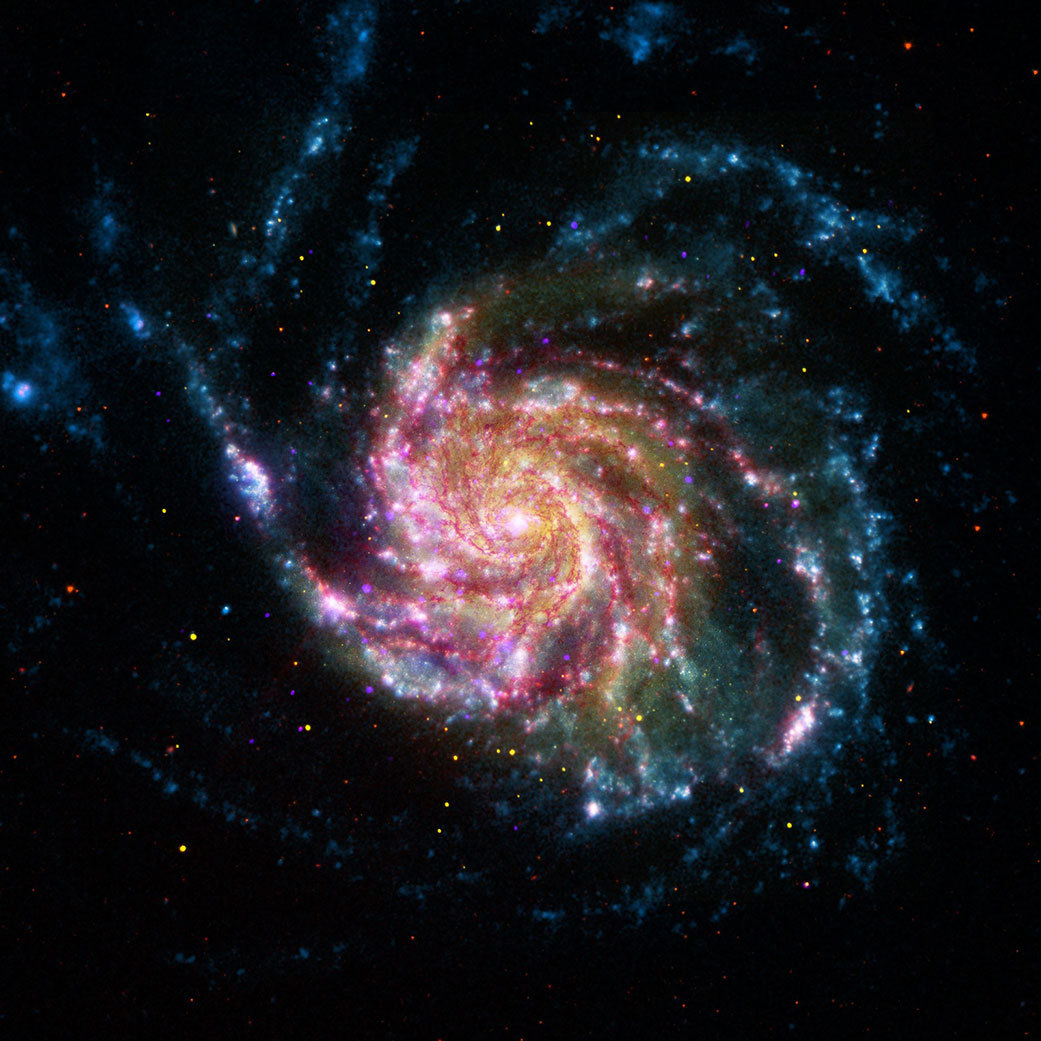
This image of Messier 101, also known as the Pinwheel Galaxy or M101, combines data in the infrared, visible, ultraviolet and X-rays from Spitzer and three other NASA space telescopes: Hubble, the Galaxy Evolution Explorer’s Far Ultraviolet detector (GALEX) and the Chandra X-Ray Observatory. The galaxy is about 70% larger than our own Milky Way, with a diameter of about 170,000 light-years, and sits at a distance of 21 million light-years from Earth. Read more about its colors here.
Cartwheel Galaxy Makes Waves
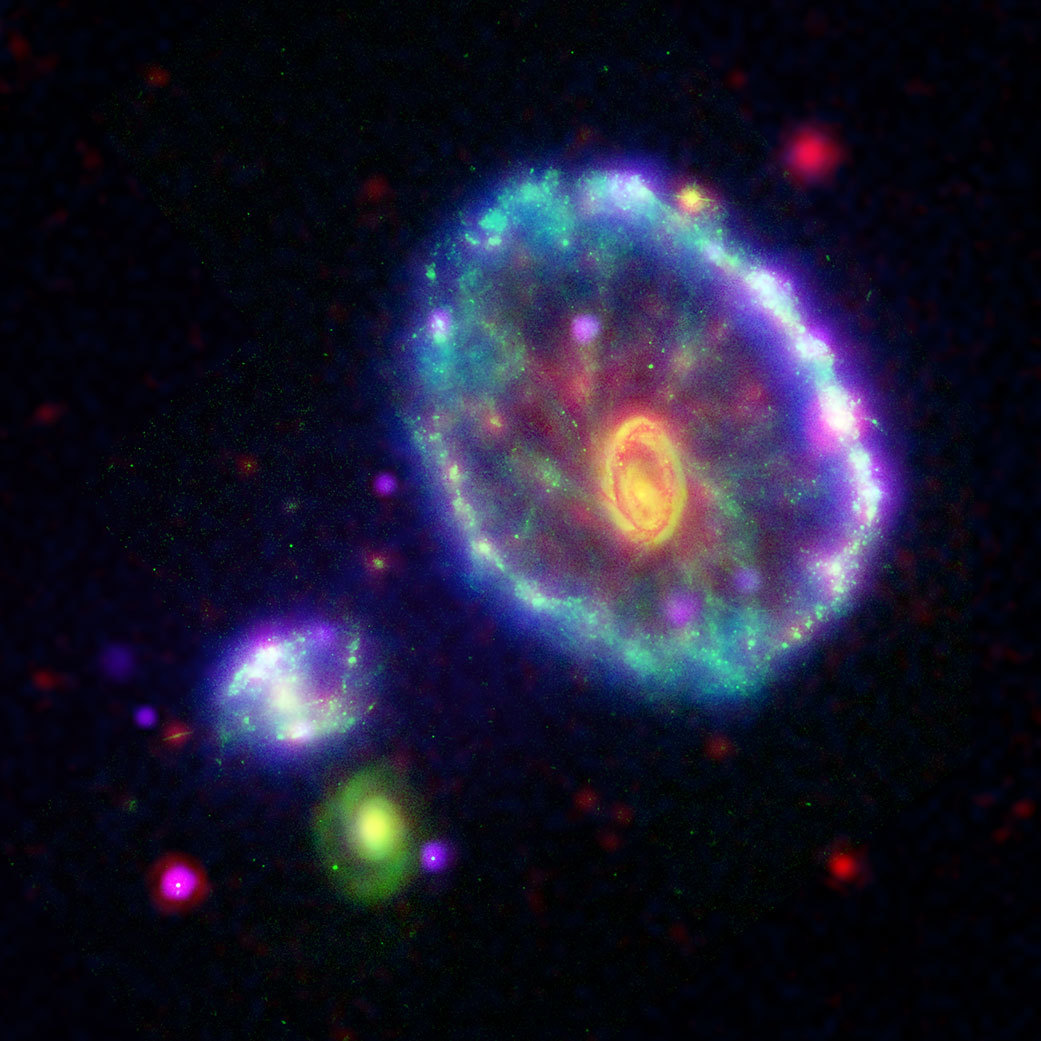
Approximately 100 million years ago, a smaller galaxy plunged through the heart of the Cartwheel galaxy, creating ripples of brief star formation. As with the Pinwheel galaxy above, this composite image includes data from NASA’s Spitzer, Hubble, GALEX and Chandra observatories.
The first ripple appears as a bright blue outer ring around the larger object, radiating ultraviolet light visible to GALEX. The clumps of pink along the outer blue ring are X-ray (observed by Chandra) and ultraviolet radiation.
Spitzer and Hubble Create Colorful Masterpiece
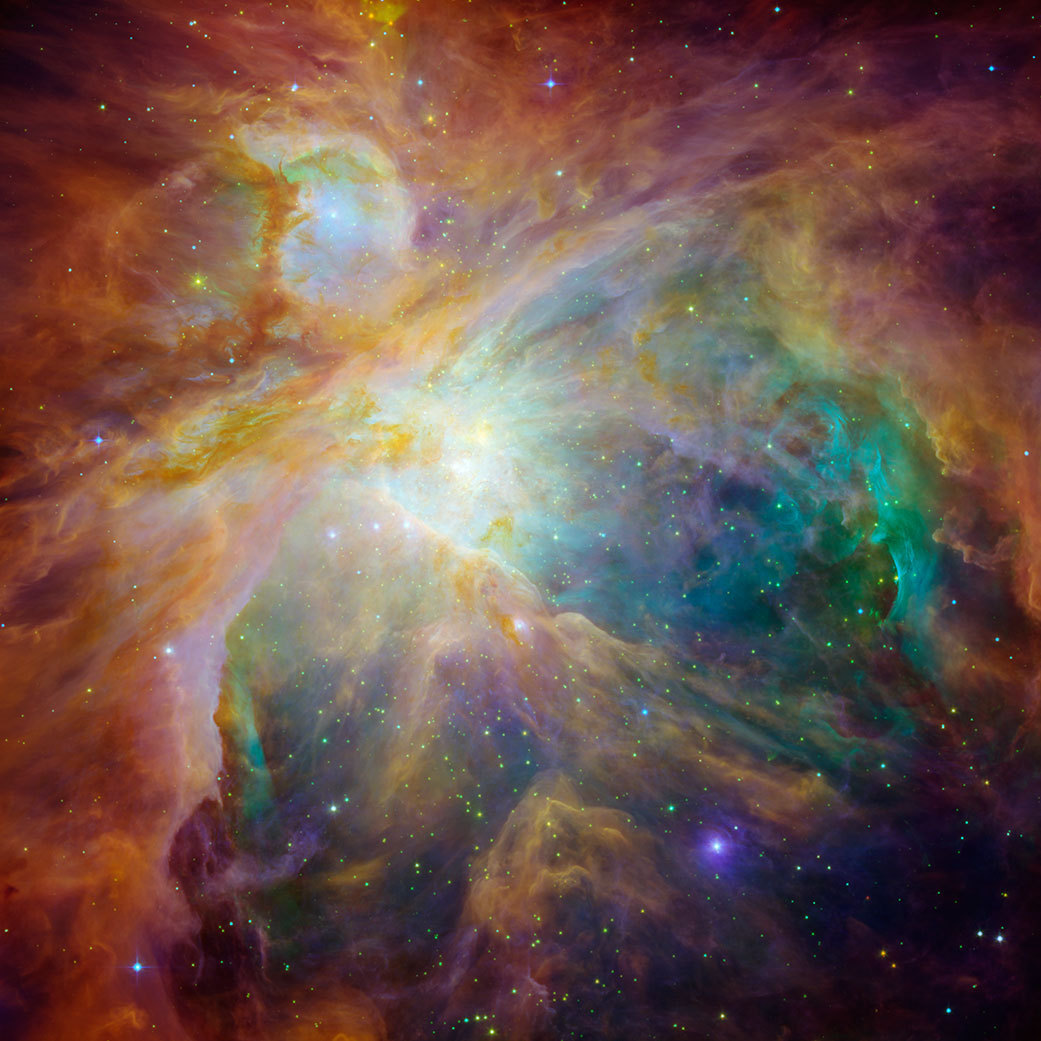
Located 1,500 light-years from Earth, the Orion nebula is the brightest spot in the sword of the constellation Orion. Four massive stars, collectively called the Trapezium, appear as a yellow smudge near the image center. Visible and ultraviolet data from Hubble appear as swirls of green that indicate the presence of gas heated by intense ultraviolet radiation from the Trapezium’s stars. Less-embedded stars appear as specks of green, and foreground stars as blue spots. Meanwhile, Spitzer’s infrared view exposes carbon-rich molecules called polycyclic aromatic hydrocarbons, shown here as wisps of red and orange. Orange-yellow dots are infant stars deeply embedded in cocoons of dust and gas.
A Space Spider Watches Over Young Stars
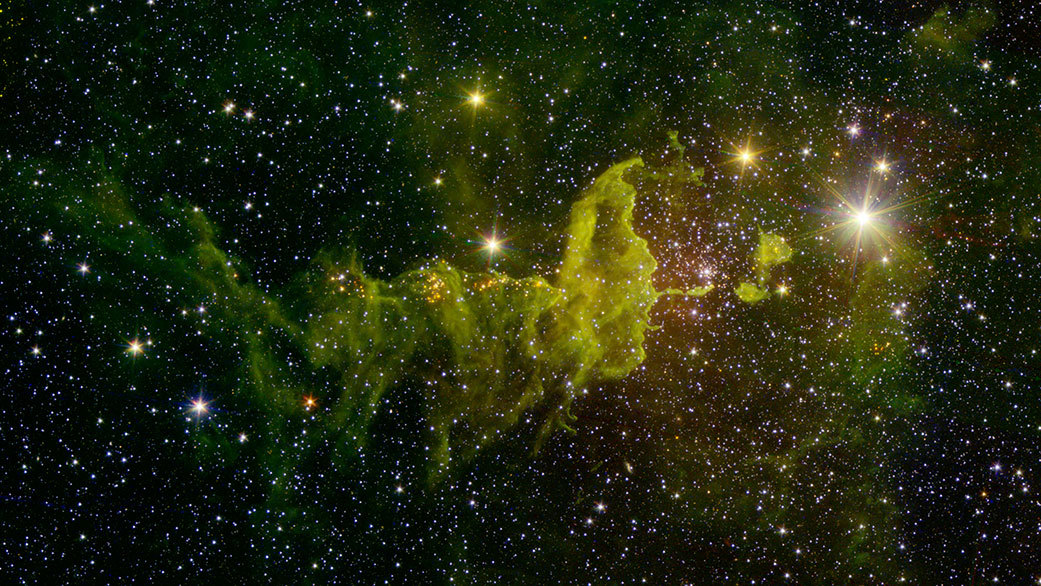
Located about 10,000 light-years from Earth in the constellation Auriga, the Spider nebula resides in the outer part of the Milky Way. Combining data from Spitzer and the Two Micron All Sky Survey (2MASS), the image shows green clouds of dust illuminated by star formation in the region.
North America Nebula in Different Lights
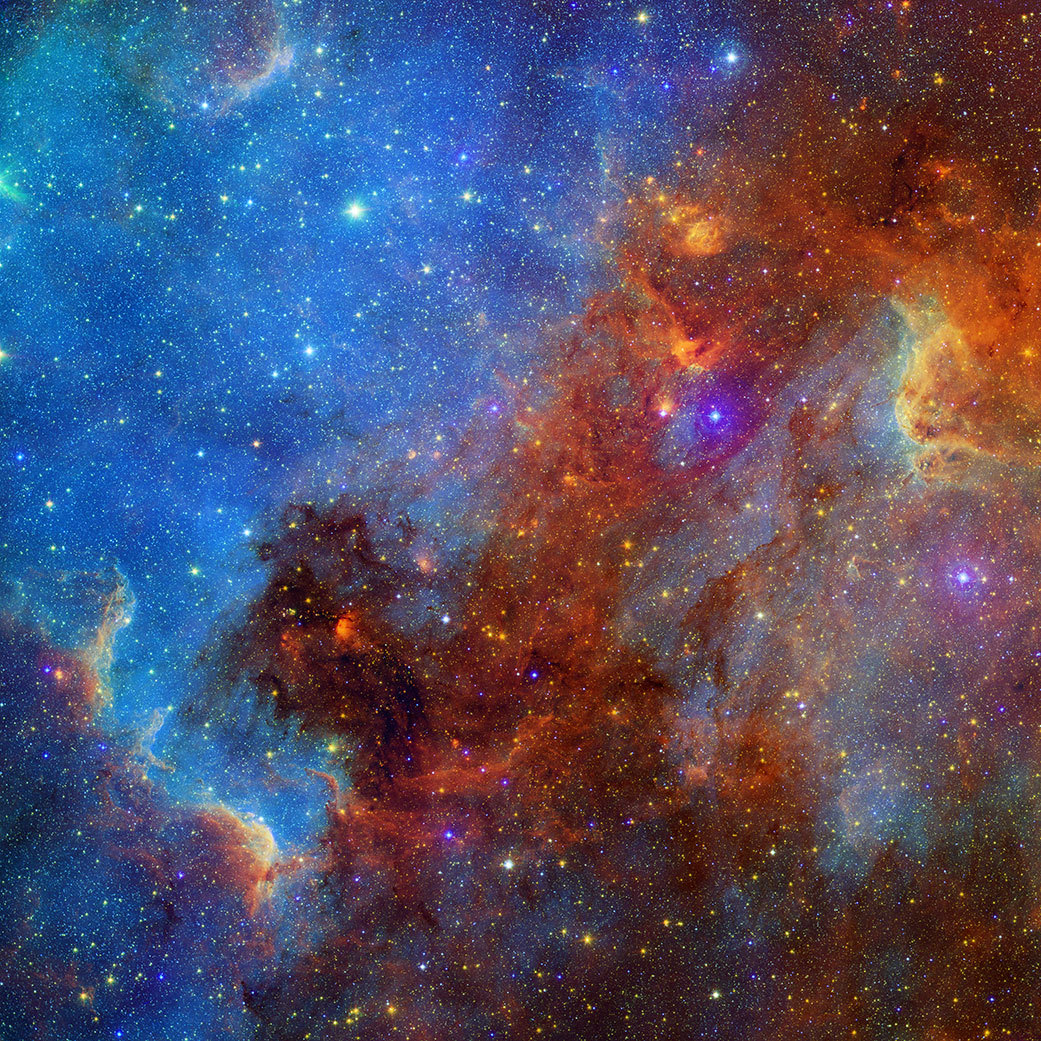
This view of the North America nebula combines visible light collected by the Digitized Sky Survey with infrared light from NASA’s Spitzer Space Telescope. Blue hues represent visible light, while infrared is displayed as red and green. Clusters of young stars (about 1 million years old) can be found throughout the image.
Spitzer Captures Our Galaxy’s Bustling Center
This infrared mosaic offers a stunning view of the Milky Way galaxy’s busy center. The pictured region, located in the Sagittarius constellation, is 900 light-years agross and shows hundreds of thousands of mostly old stars amid clouds of glowing dust lit up by younger, more massive stars. Our Sun is located 26,000 light-years away in a more peaceful, spacious neighborhood, out in the galactic suburbs.
The Eternal Life of Stardust
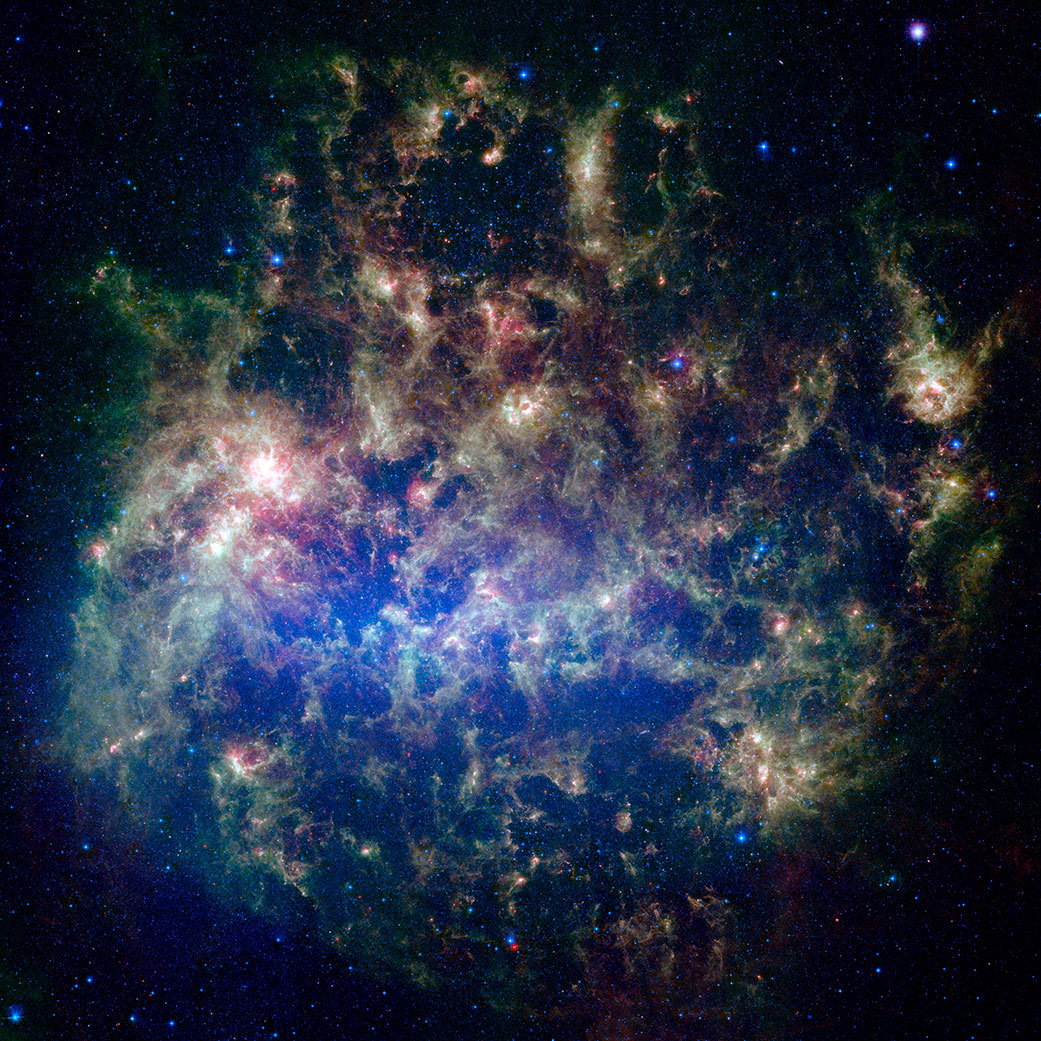
The Large Magellanic Cloud, a dwarf galaxy located about 160,000 light-years from Earth, looks like a choppy sea of dust in this infrared portrait. The blue color, seen most prominently in the central bar, represents starlight from older stars. The chaotic, bright regions outside this bar are filled with hot, massive stars buried in thick blankets of dust.
A Stellar Family Portrait
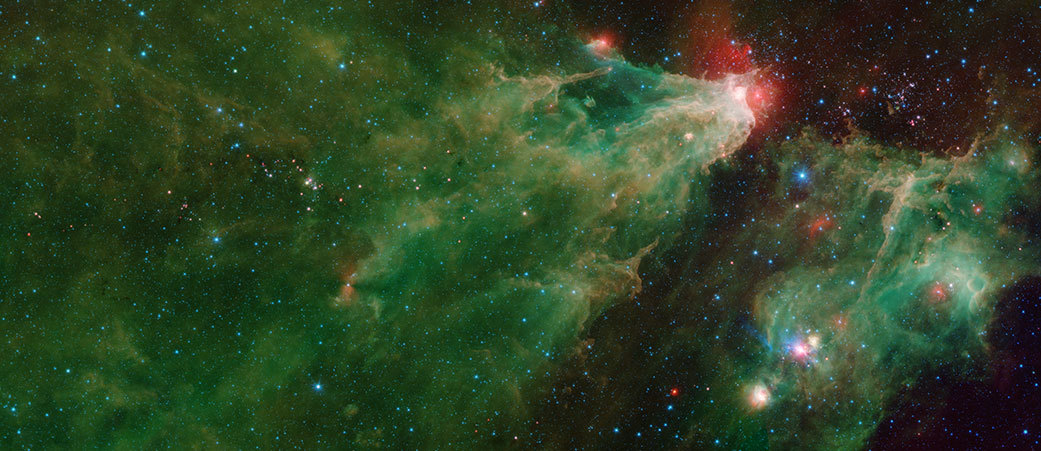
In this large celestial mosaic from Spitzer, there’s a lot to see, including multiple clusters of stars born from the same dense clumps of gas and dust. The grand green-and-orange delta filling most of the image is a faraway nebula. The bright white region at its tip is illuminated by massive stars, and dust that has been heated by the stars’ radiation creates the surrounding red glow.
Managed by our Jet Propulsion Laboratory in Pasadena, California, Spitzer’s primary mission lasted five-and-a-half years and ended when it ran out of the liquid helium coolant necessary to operate two of its three instruments. But, its passive-cooling design has allowed part of its third instrument to continue operating for more than 10 additional years. The mission is scheduled to end on Jan. 30, 2020.
Make sure to follow us on Tumblr for your regular dose of space: http://nasa.tumblr.com NASASpaceSpitzer Space telescopeHubble Space Telescopescienceastronomyspace picturesspace photographyspace wallpapersstarsgalaxymilky way galaxynebulaspace telescopestar formationstar forming region
12 Great Gifts from Astronomy
This is a season where our thoughts turn to others and many exchange gifts with friends and family. For astronomers, our universe is the gift that keeps on giving. We’ve learned so much about it, but every question we answer leads to new things we want to know. Stars, galaxies, planets, black holes … there are endless wonders to study.
In honor of this time of year, let’s count our way through some of our favorite gifts from astronomy.
Our first astronomical gift is … one planet Earth
So far, there is only one planet that we’ve found that has everything needed to support life as we know it — Earth. Even though we’ve discovered over 5,200 planets outside our solar system, none are quite like home. But the search continues with the help of missions like our Transiting Exoplanet Survey Satellite (TESS). And even you (yes, you!) can help in the search with citizen science programs like Planet Hunters TESS and Backyard Worlds.
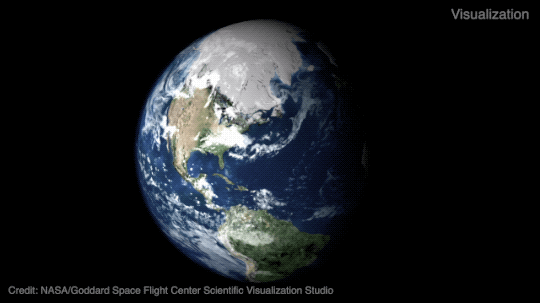
Our second astronomical gift is … two giant bubbles
Astronomers found out that our Milky Way galaxy is blowing bubbles — two of them! Each bubble is about 25,000 light-years tall and glows in gamma rays. Scientists using data from our Fermi Gamma-ray Space Telescope discovered these structures in 2010, and we’re still learning about them.
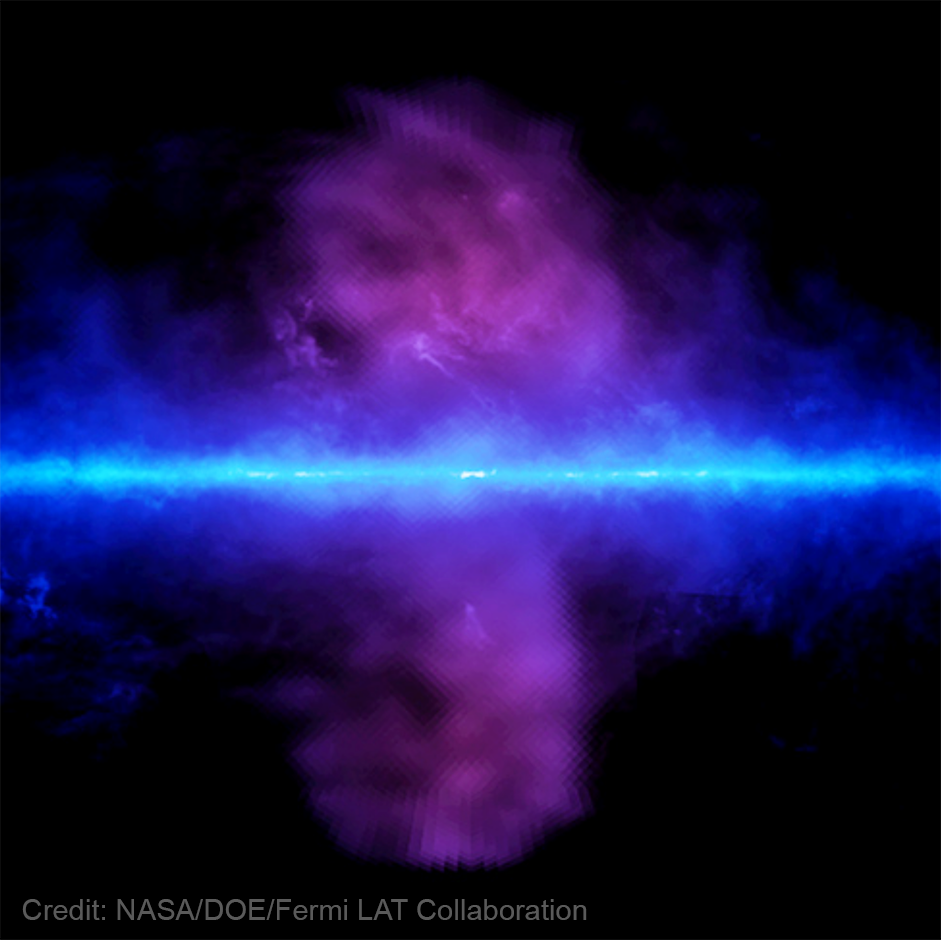
Our third astronomical gift is … three types of black holes
Most black holes fit into two size categories: stellar-mass goes up to hundreds of Suns, and supermassive starts at hundreds of thousands of Suns. But what happens between those two? Where are the midsize ones? With the help of NASA’s Hubble Space Telescope, scientists found the best evidence yet for that third, in between type that we call intermediate-mass black holes. The masses of these black holes should range from around a hundred to hundreds of thousands of times the Sun’s mass. The hunt continues for these elusive black holes.
Our fourth and fifth astronomical gifts are … Stephan’s Quintet
When looking at this stunning image of Stephan’s Quintet from our James Webb Space Telescope, it seems like five galaxies are hanging around one another — but did you know that one of the galaxies is much closer than the others? Four of the five galaxies are hanging out together about 290 million light-years away, but the fifth and leftmost galaxy in the image below — called NGC 7320 — is actually closer to Earth at just 40 million light-years away.
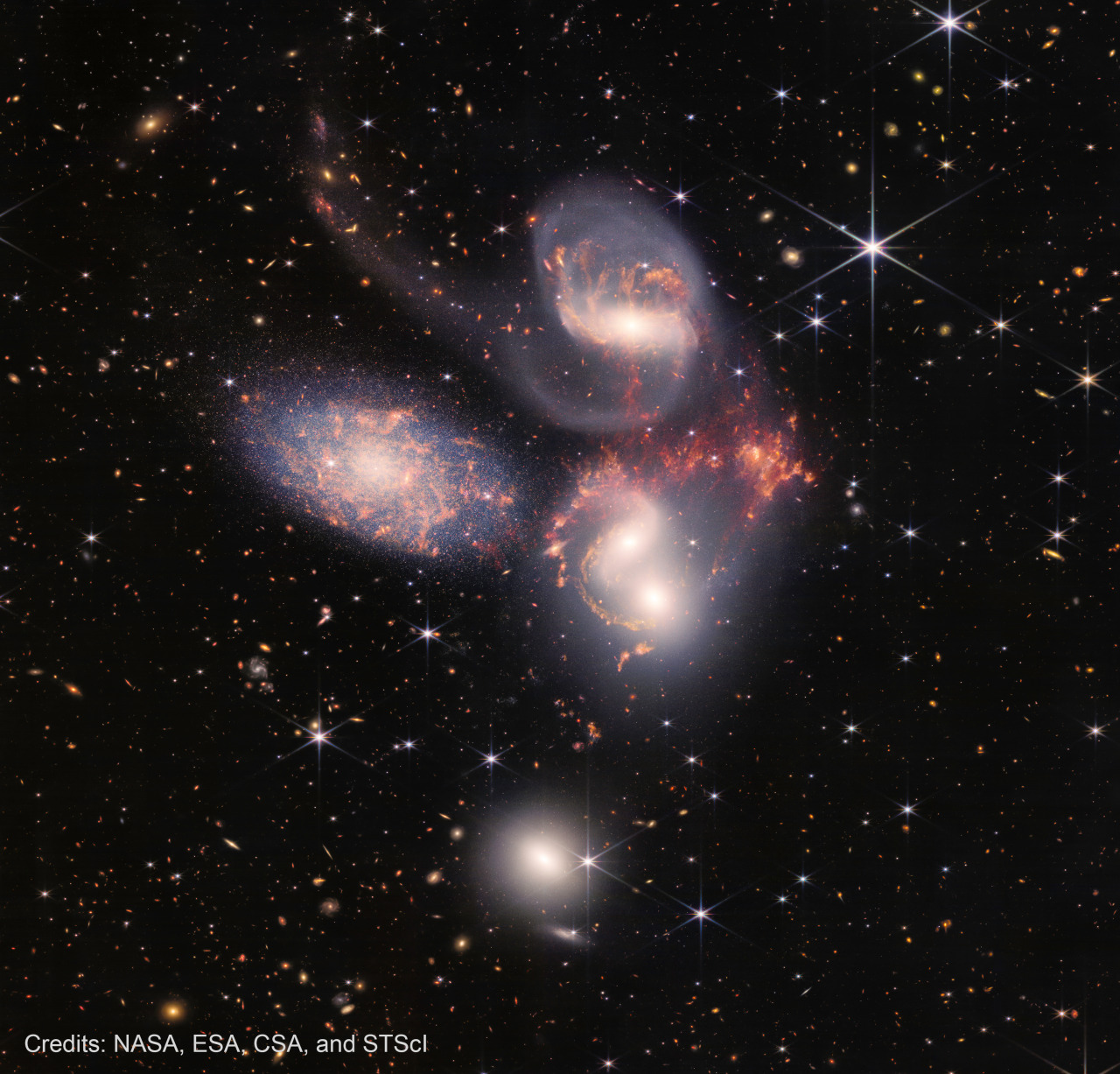
Our sixth astronomical gift is … an eclipsing six-star system
Astronomers found a six-star system where all of the stars undergo eclipses, using data from our TESS mission, a supercomputer, and automated eclipse-identifying software. The system, called TYC 7037-89-1, is located 1,900 light-years away in the constellation Eridanus and the first of its kind we’ve found.
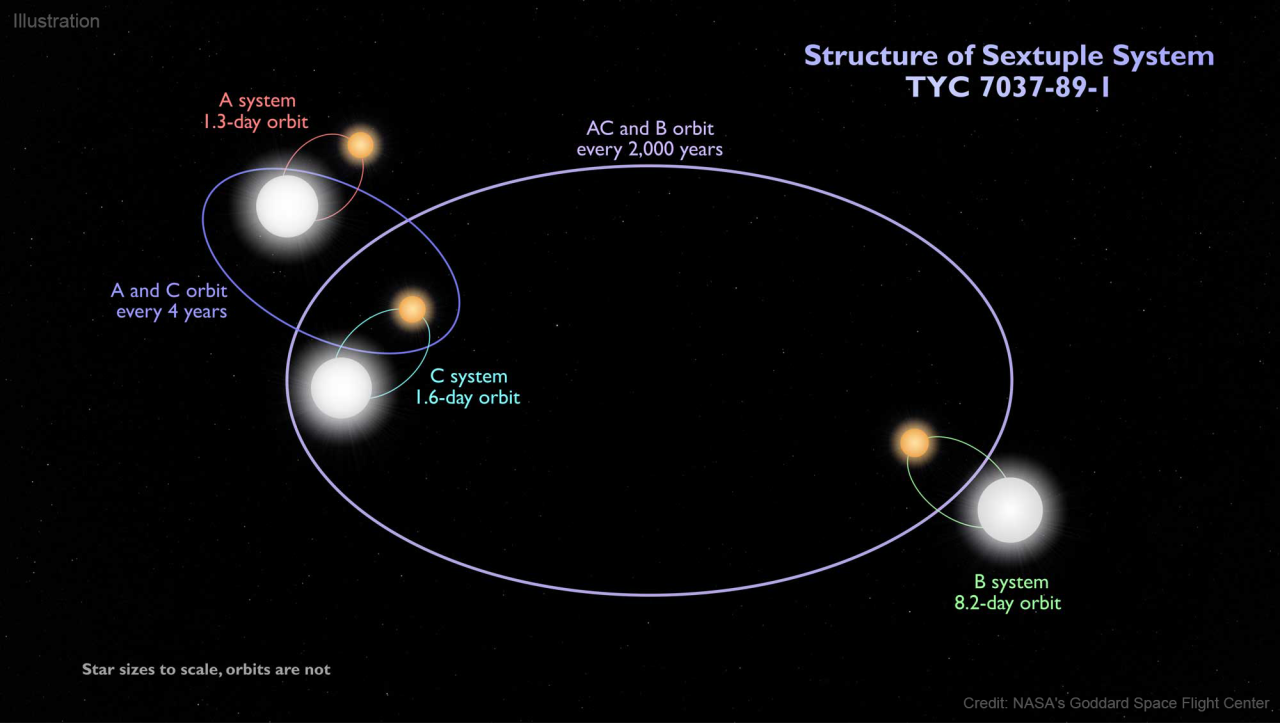
Our seventh astronomical gift is … seven Earth-sized planets
In 2017, our now-retired Spitzer Space Telescope helped find seven Earth-size planets around TRAPPIST-1. It remains the largest batch of Earth-size worlds found around a single star and the most rocky planets found in one star’s habitable zone, the range of distances where conditions may be just right to allow the presence of liquid water on a planet’s surface.
Further research has helped us understand the planets’ densities, atmospheres, and more!
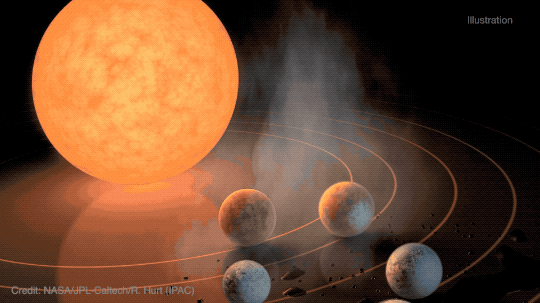
Our eighth astronomical gift is … an (almost) eight-foot mirror
The primary mirror on our Nancy Grace Roman Space Telescope is approximately eight feet in diameter, similar to our Hubble Space Telescope. But Roman can survey large regions of the sky over 1,000 times faster, allowing it to hunt for thousands of exoplanets and measure light from a billion galaxies.
Our ninth astronomical gift is … a kilonova nine days later
In 2017, the National Science Foundation (NSF)’s Laser Interferometer Gravitational-Wave Observatory (LIGO) and European Gravitational Observatory’s Virgo detected gravitational waves from a pair of colliding neutron stars. Less than two seconds later, our telescopes detected a burst of gamma rays from the same event. It was the first time light and gravitational waves were seen from the same cosmic source. But then nine days later, astronomers saw X-ray light produced in jets in the collision’s aftermath. This later emission is called a kilonova, and it helped astronomers understand what the slower-moving material is made of.
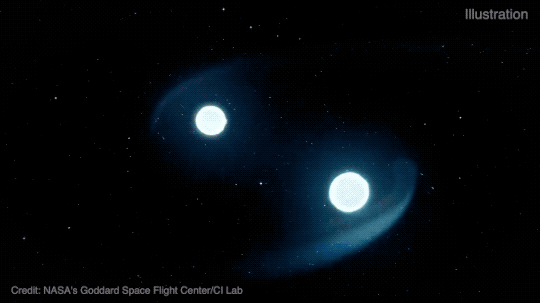
Our tenth astronomical gift is … NuSTAR’s ten-meter-long mast
Our NuSTAR X-ray observatory is the first space telescope able to focus on high-energy X-rays. Its ten-meter-long (33 foot) mast, which deployed shortly after launch, puts NuSTAR’s detectors at the perfect distance from its reflective optics to focus X-rays. NuSTAR recently celebrated 10 years since its launch in 2012.
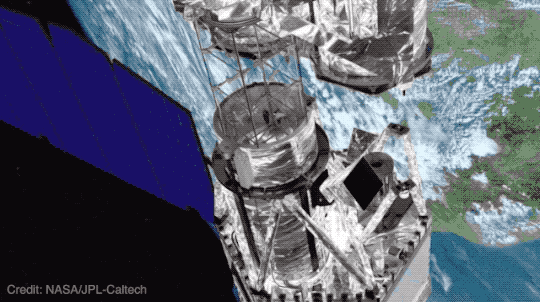
Our eleventh astronomical gift is … eleven days of observations
How long did our Hubble Space Telescope stare at a seemingly empty patch of sky to discover it was full of thousands of faint galaxies? More than 11 days of observations came together to capture this amazing image — that’s about 1 million seconds spread over 400 orbits around Earth!
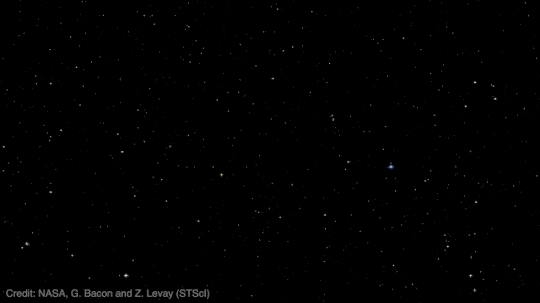
Our twelfth astronomical gift is … a twelve-kilometer radius
Pulsars are collapsed stellar cores that pack the mass of our Sun into a whirling city-sized ball, compressing matter to its limits. Our NICER telescope aboard the International Space Station helped us precisely measure one called J0030 and found it had a radius of about twelve kilometers — roughly the size of Chicago! This discovery has expanded our understanding of pulsars with the most precise and reliable size measurements of any to date.
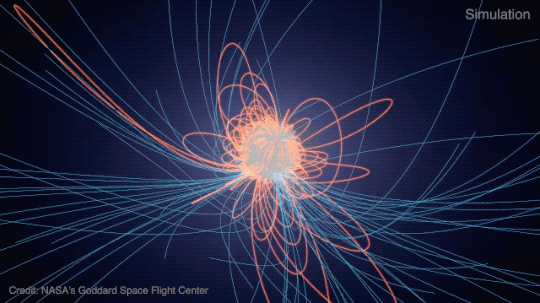
Stay tuned to NASA Universe on Twitter and Facebook to keep up with what’s going on in the cosmos every day. You can learn more about the universe here.
Make sure to follow us on Tumblr for your regular dose of space! NASAspaceblrastronomyspaceuniverseastrophysicssciencecosmosexoplanetsblack holesstarsgalaxiesgravityhubble space telescopejames webb space telescopeinternational space station
The Science Goals of the James Webb Space Telescope
Our James Webb Space Telescope is an epic mission that will give us a window into the early universe, allowing us to see the time period during which the first stars and galaxies formed. Webb will not only change what we know, but also how we think about the night sky and our place in the cosmos. Want to learn more? Join two of our scientists as they talk about what the James Webb Telescope is, why it is being built and what it will help us learn about the universe…
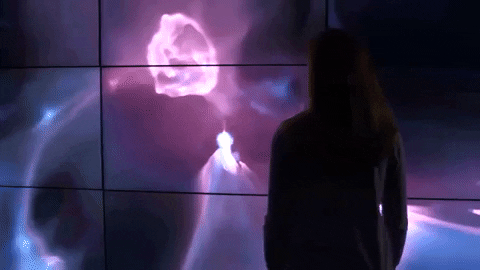
First, meet Dr. Amber Straughn.She grew up in a small farming town in Arkansas, where her fascination with astronomy began under beautifully dark, rural skies. After finishing a PhD in Physics, she came to NASA Goddard to study galaxies using data from our Hubble Space Telescope. In addition to research, Amber’s role with the Webb project’s science team involves working with Communications and Outreach activities. She is looking forward to using data from Webb in her research on galaxy formation and evolution.
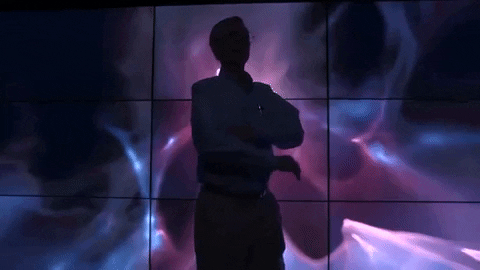
We also talked with Dr. John Mather, the Senior Project Scientist for Webb, who leads our science team. He won a Nobel Prize in 2006 for confirming the Big Bang theory with extreme precision via a mission called the Cosmic Background Explorer (COBE) mission. John was the Principal Investigator (PI) of the Far IR Absolute Spectrophotometer (FIRAS) instrument on COBE. He’s an expert on cosmology, and infrared astronomy and instrumentation.
Now, let’s get to the science of Webb!
Dr. Amber Straughn: The James Webb Space Telescope at its core is designed to answer some of the biggest questions we have in astronomy today. And these are questions that go beyond just being science questions; they are questions that really get to the heart of who we are as human beings; questions like where do we come from? How did we get here? And, of course, the big one – are we alone?
To answer the biggest questions in astronomy today we really need a very big telescope. And the James Webb Space Telescope is the biggest telescope we’ve ever attempted to send into space. It sets us up with some really big engineering challenges.

Dr. John Mather: One of the wonderful challenges about astronomy is that we have to imagine something so we can go look for it. But nature has a way of being even more creative than we are, so we have always been surprised by what we see in the sky. That’s why building a telescope has always been interesting. Every time we build a better one, we see something we never imagined was out there. That’s been going on for centuries. This is the next step in that great series, of bigger and better and more powerful telescopes that surely will surprise us in some way that I can’t tell you.

It has never been done before, building a big telescope that will unfold in space. We knew we needed something that was bigger than the rocket to achieve the scientific discoveries that we wanted to make. We had to invent a new way to make the mirrors, a way to focus it out in outer space, several new kinds of infrared detectors, and we had to invent the big unfolding umbrella we call the sunshield.

Amber: One of Webb’s goals is to detect the very first stars and galaxies that were born in the very early universe. This is a part of the universe that we haven’t seen at all yet. We don’t know what’s there, so the telescope in a sense is going to open up this brand-new part of the universe, the part of the universe that got everything started.
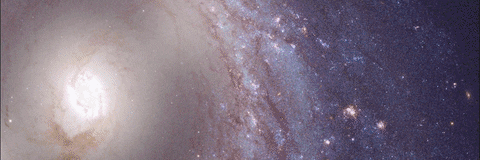
John: The first stars and galaxies are really the big mystery for us. We don’t know how that happened. We don’t know when it happened. We don’t know what those stars were like. We have a pretty good idea that they were very much larger than the sun and that they would burn out in a tremendous burst of glory in just a few million years.
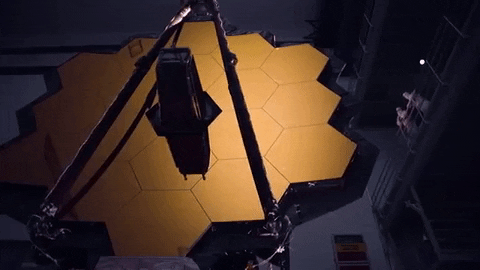
Amber: We also want to watch how galaxies grow and change over time. We have questions like how galaxies merge, how black holes form and how gas inflows and outflows affect galaxy evolution. But we’re really missing a key piece of the puzzle, which is how galaxies got their start.
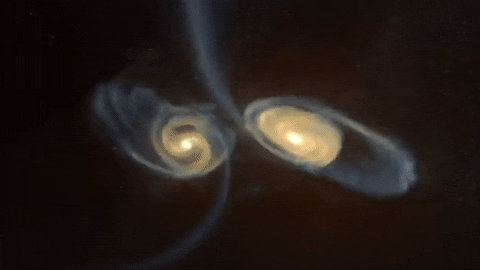
John: Astronomy is one of the most observationally based sciences we’ve ever had. Everything we know about the sky has been a surprise. The ancients knew about the stars, but they didn’t know they were far away. They didn’t know they were like the Sun. Eventually we found that our own galaxy is one of hundreds of billions of galaxies and that the Universe is actually very old, but not infinitely old. So that was a big surprise too. Einstein thought, of course the Universe must have an infinite age, without a starting point. Well, he was wrong! Our intuition has just been wrong almost all the time. We’re pretty confident that we don’t know what we’re going to find.
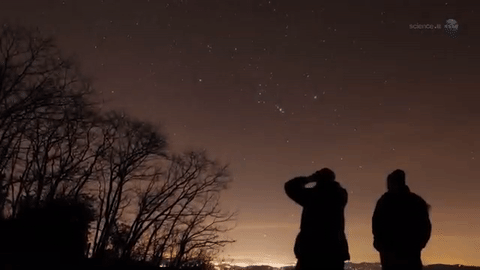
Amber: As an astronomer one of the most exciting things about working on a telescope like this is the prospect of what it will tell us that we haven’t even thought of yet. We have all these really detailed science questions that we’ll ask, that we know to ask, and that we’ll answer. And in a sense that is what science is all about… in answering the questions we come up with more questions. There’s this almost infinite supply of questions, of things that we have to learn. So that’s why we build telescopes to get to this fundamental part of who we are as human beings. We’re explorers, and we want to learn about what our Universe is like.
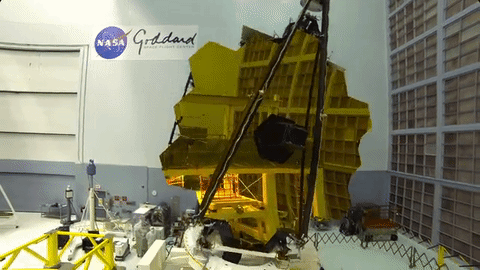
Webb will be the world’s premier space science observatory. It will solve mysteries in our solar system, look beyond to distant worlds around other stars and probe the mysterious structures and origins of our universe – including our place in it. Webb is an international project we’re leading with our partners, ESA (European Space Agency) and the Canadian Space Agency.
To learn more about our James Webb Space Telescope, visit the website, or follow the mission on Facebook, Twitter and Instagram.
Make sure to follow us on Tumblr for your regular dose of space: http://nasa.tumblr.com.
NASAspacesciencespace telescopeJWSTJames Webb Space Telescopegalaxiesstarsastronomystar gazingplanetsblack holes
The Stellar Buddy System
Our Sun has an entourage of planets, moons, and smaller objects to keep it company as it traverses the galaxy. But it’s still lonely compared to many of the other stars out there, which often come in pairs. These cosmic couples, called binary stars, are very important in astronomy because they can easily reveal things that are much harder to learn from stars that are on their own. And some of them could even host habitable planets!
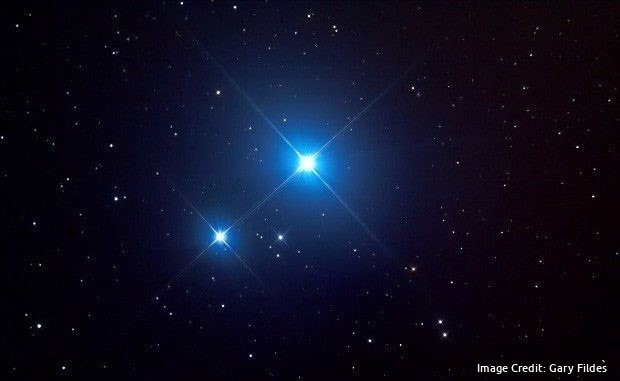
The birth of a stellar duo
New stars emerge from swirling clouds of gas and dust that are peppered throughout the galaxy. Scientists still aren’t sure about all the details, but turbulence deep within these clouds may give rise to knots that are denser than their surroundings. The knots have stronger gravity, so they can pull in more material and the cloud may begin to collapse.
The material at the center heats up. Known as a protostar, it is this hot core that will one day become a star. Sometimes these spinning clouds of collapsing gas and dust may break up into two, three, or even more blobs that eventually become stars. That would explain why the majority of the stars in the Milky Way are born with at least one sibling.
Seeing stars
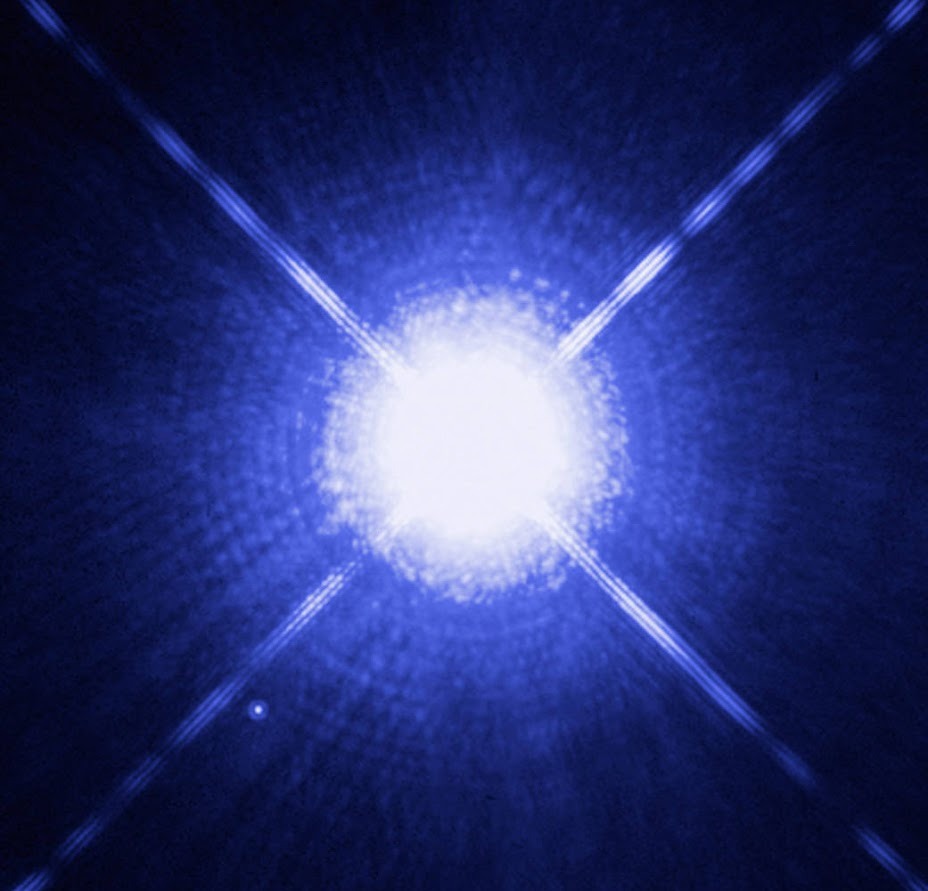
We can’t always tell if we’re looking at binary stars using just our eyes. They’re often so close together in the sky that we see them as a single star. For example, Sirius, the brightest star we can see at night, is actually a binary system (see if you can spot both stars in the photo above). But no one knew that until the 1800s.
Precise observations showed that Sirius was swaying back and forth like it was at a middle school dance. In 1862, astronomer Alvin Graham Clark used a telescope to see that Sirius is actually two stars that orbit each other.
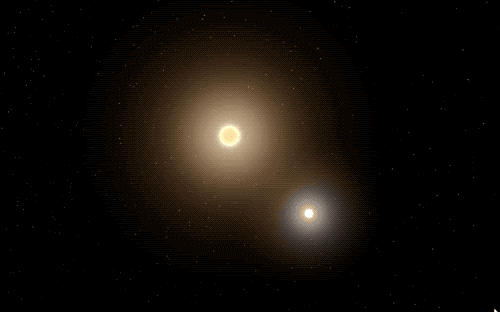
But even through our most powerful telescopes, some binary systems still masquerade as a single star. Fortunately there are a couple of tricks we can use to spot these pairs too.
Since binary stars orbit each other, there’s a chance that we’ll see some stars moving toward and away from us as they go around each other. We just need to have an edge-on view of their orbits. Astronomers can detect this movement because it changes the color of the star’s light – a phenomenon known as the Doppler effect.
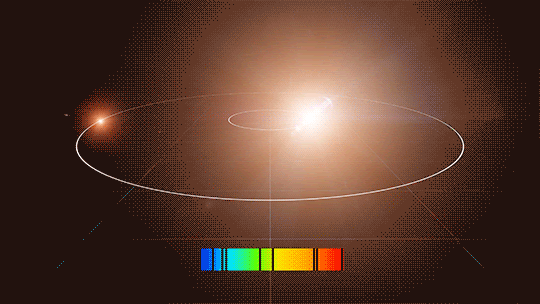
Stars we can find this way are called spectroscopic binaries because we have to look at their spectra, which are basically charts or graphs that show the intensity of light being emitted over a range of energies. We can spot these star pairs because light travels in waves. When a star moves toward us, the waves of its light arrive closer together, which makes its light bluer. When a star moves away, the waves are lengthened, reddening its light.
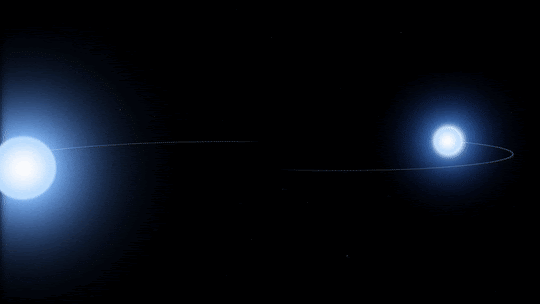
Sometimes we can see binary stars when one of the stars moves in front of the other. Astronomers find these systems, called eclipsing binaries, by measuring the amount of light coming from stars over time. We receive less light than usual when the stars pass in front of each other, because the one in front will block some of the farther star’s light.
Sibling rivalry
Twin stars don’t always get along with each other – their relationship may be explosive! Type Ia supernovae happen in some binary systems in which a white dwarf – the small, hot core left over when a Sun-like star runs out of fuel and ejects its outer layers – is stealing material away from its companion star. This results in a runaway reaction that ultimately detonates the thieving star. The same type of explosion may also happen when two white dwarfs spiral toward each other and collide. Yikes!

Scientists know how to determine how bright these explosions should truly be at their peak, making Type Ia supernovae so-called standard candles. That means astronomers can determine how far away they are by seeing how bright they look from Earth. The farther they are, the dimmer they appear. Astronomers can also look at the wavelengths of light coming from the supernovae to find out how fast the dying stars are moving away from us.
Studying these supernovae led to the discovery that the expansion of the universe is speeding up. Our Nancy Grace Roman Space Telescope will scan the skies for these exploding stars when it launches in the mid-2020s to help us figure out what’s causing the expansion to accelerate – a mystery known as dark energy.

Spilling stellar secrets
Astronomers like finding binary systems because it’s a lot easier to learn more about stars that are in pairs than ones that are on their own. That’s because the stars affect each other in ways we can measure. For example, by paying attention to how the stars orbit each other, we can determine how massive they are. Since heavier stars burn hotter and use up their fuel more quickly than lighter ones, knowing a star’s mass reveals other interesting things too.
By studying how the light changes in eclipsing binaries when the stars cross in front of each other, we can learn even more! We can figure out their sizes, masses, how fast they’re each spinning, how hot they are, and even how far away they are. All of that helps us understand more about the universe.
Tatooine worlds
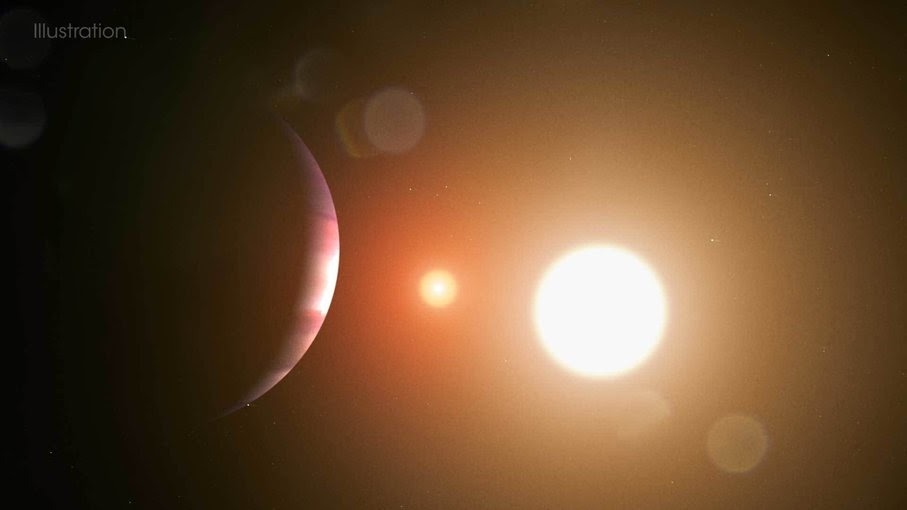
Thanks to observatories such as our Kepler Space Telescope, we know that worlds like Luke Skywalker’s home planet Tatooine in “Star Wars” exist in real life. And if a planet orbits at the right distance from the two stars, it could even be habitable (and stay that way for a long time).
In 2019, our Transiting Exoplanet Survey Satellite (TESS) found a planet, known as TOI-1338 b, orbiting a pair of stars. These worlds are tricker to find than planets with only one host star, but TESS is expected to find several more!
Want to learn more about the relationships between stellar couples? Check out this Tumblr post: https://nasa.tumblr.com/post/190824389279/cosmic-couples-and-devastating-breakups
Make sure to follow us on Tumblr for your regular dose of space: http://nasa.tumblr.com NASAstarsmay the fourth be with youStar Wars Daybinary starstattooineTESSRoman Space TelescopespaceKeplersciencespace factssiriusdark energysupernovaastronomyexoplanets
5 Years, 8 Discoveries: NASA Exoplanet Explorer Sees Dancing Stars & a Star-Shredding Black Hole

This all-sky mosaic was constructed from 912 Transiting Exoplanet Survey Satellite (TESS) images. Prominent features include the Milky Way, a glowing arc that represents the bright central plane of our galaxy, and the Large and Small Magellanic Clouds – satellite galaxies of our own located, respectively, 160,000 and 200,000 light-years away. In the northern sky, look for the small, oblong shape of the Andromeda galaxy (M 31), the closest big spiral galaxy, located 2.5 million light-years away. The black regions are areas of sky that TESS didn’t image. Credit: NASA/MIT/TESS and Ethan Kruse (University of Maryland College Park)
On April 18, 2018, we launched the Transiting Exoplanet Survey Satellite, better known as TESS. It was designed to search for planets beyond our solar system – exoplanets – and to discover worlds for our James Webb Space Telescope, which launched three years later, to further explore. TESS images sections of sky, one hemisphere at a time. When we put all the images together, we get a great look at Earth’s sky!
In its five years in space, TESS has discovered 326 planets and more than 4,300 planet candidates. Along the way, the spacecraft has observed a plethora of other objects in space, including watching as a black hole devoured a star and seeing six stars dancing in space. Here are some notable results from TESS so far:

During its first five years in space, our Transiting Exoplanet Survey Satellite has discovered exoplanets and identified worlds that can be further explored by the James Webb Space Telescope. Credit: NASA/JPL-Caltech
1. TESS’ first discovery was a world called Pi Mensae c. It orbits the star Pi Mensae, about 60 light-years away from Earth and visible to the unaided eye in the Southern Hemisphere. This discovery kicked off NASA’s new era of planet hunting.
2. Studying planets often helps us learn about stars too! Data from TESS & Spitzer helped scientists detect a planet around the young, flaring star AU Mic, providing a unique way to study how planets form, evolve, and interact with active stars.
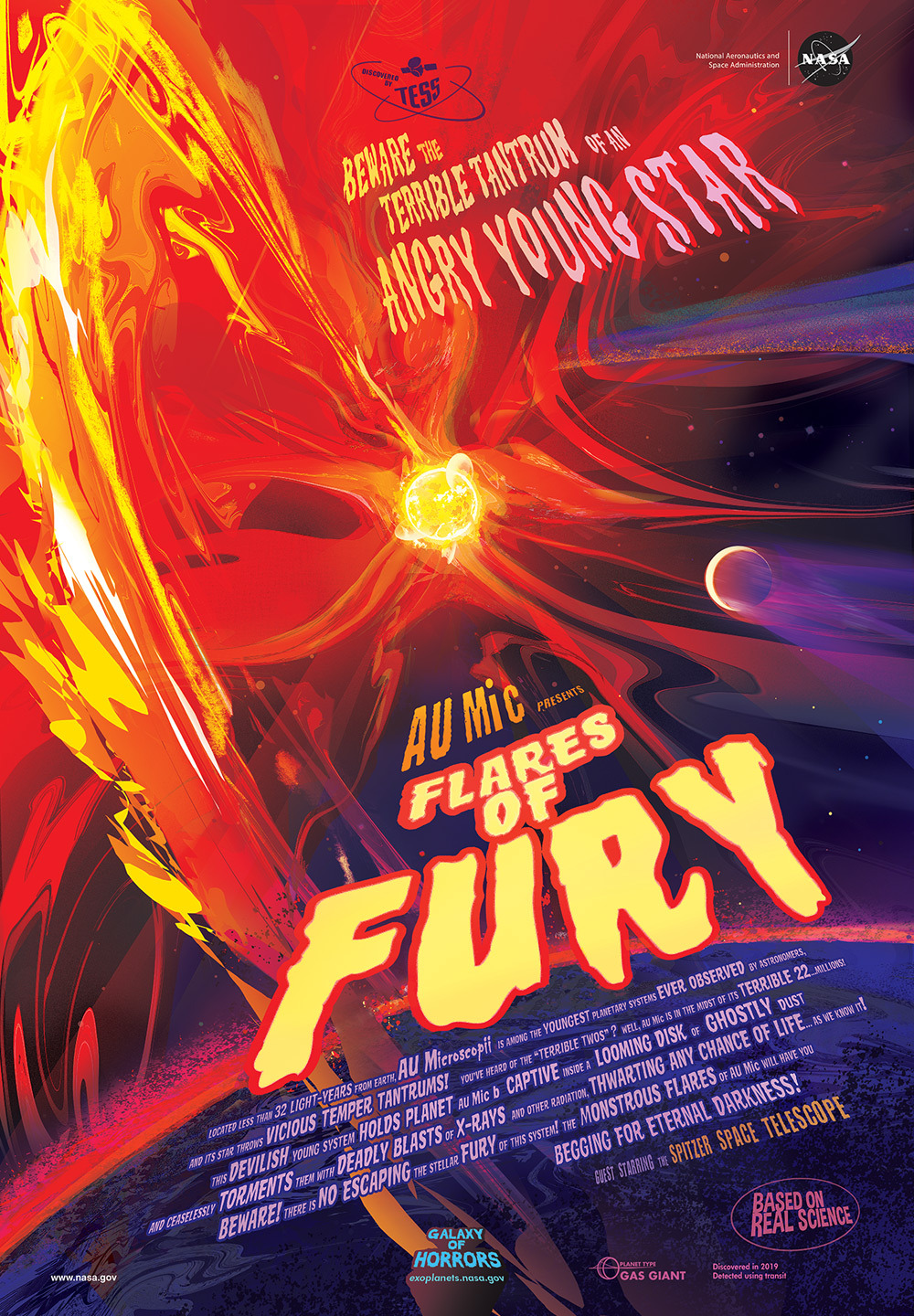
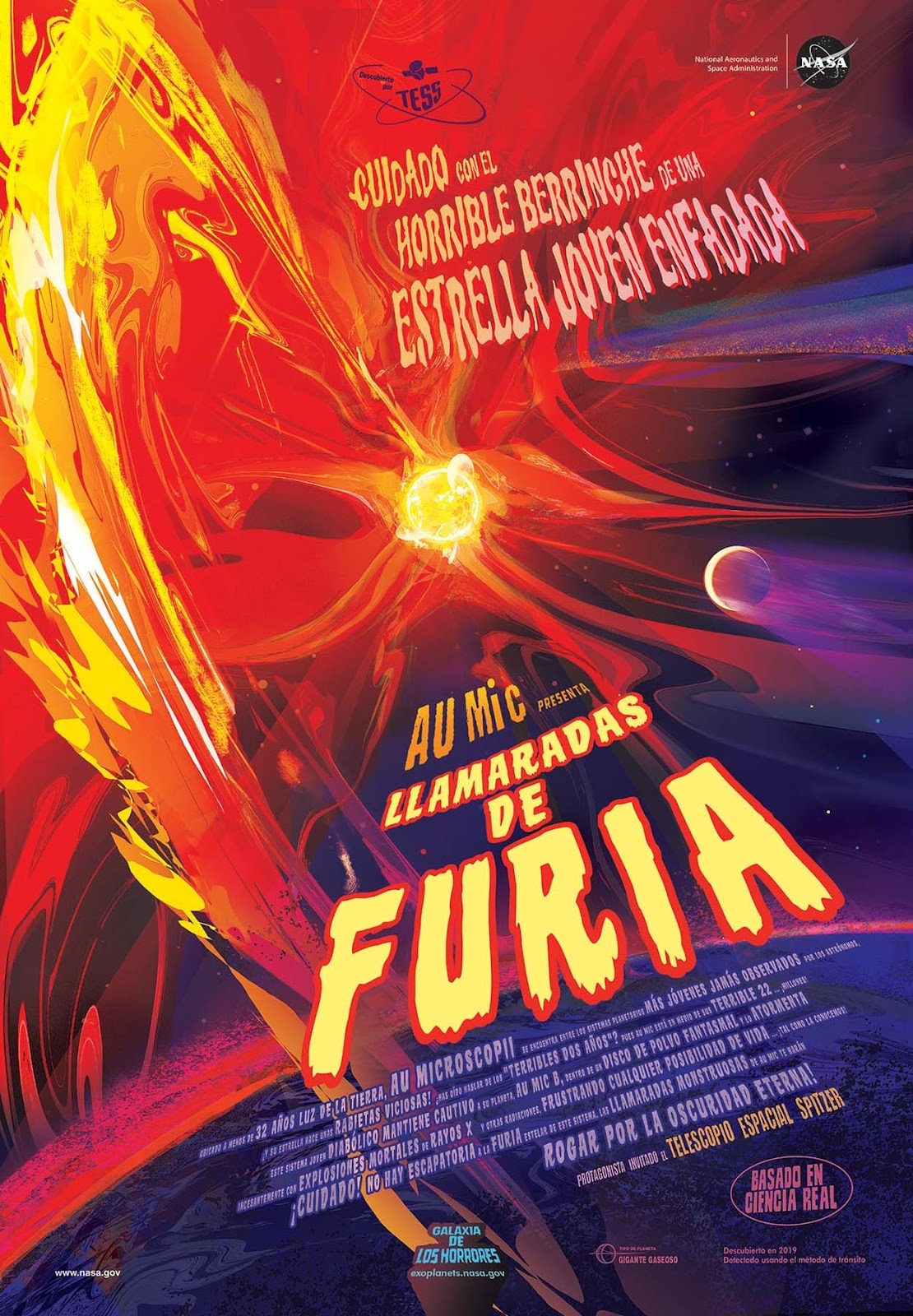
Located less than 32 light-years from Earth, AU Microscopii is among the youngest planetary systems ever observed by astronomers, and its star throws vicious temper tantrums. This devilish young system holds planet AU Mic b captive inside a looming disk of ghostly dust and ceaselessly torments it with deadly blasts of X-rays and other radiation, thwarting any chance of life… as we know it! Beware! There is no escaping the stellar fury of this system. The monstrous flares of AU Mic will have you begging for eternal darkness. Credit: NASA/JPL-Caltech
3. In addition to finding exoplanets on its own, TESS serves as a pathfinder for the James Webb Space Telescope. TESS discovered the rocky world LHS 3844 b, but Webb will tell us more about its composition. Our telescopes, much like our scientists, work together.
4. Though TESS may be a planet-hunter, it also helps us study black holes! In 2019, TESS saw a ‘‘tidal disruption event,’’ otherwise known as a black hole shredding a star.
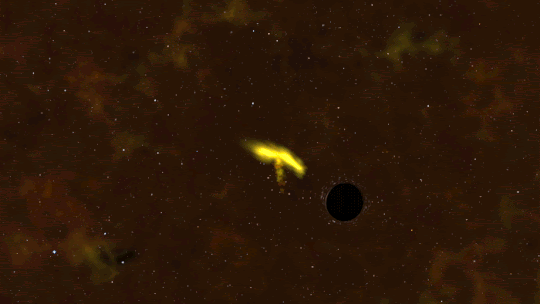
When a star strays too close to a black hole, intense tides break it apart into a stream of gas. The tail of the stream escapes the system, while the rest of it swings back around, surrounding the black hole with a disk of debris. Credit: NASA’s Goddard Space Flight Center
5. In 2020, TESS discovered its first Earth-size world in the habitable zone of its star – the distance from a star at which liquid water could exist on a planet’s surface. Earlier this year, a second rocky planet was discovered in the system.
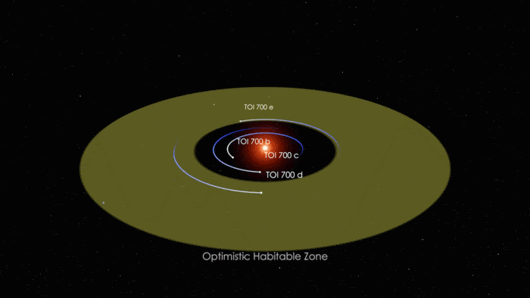
You can see the exoplanets that orbit the star TOI 700 moving within two marked habitable zones, a conservative habitable zone, and an optimistic habitable zone. Planet d orbits within the conservative habitable zone, while planet e moves within an optimistic habitable zone, the range of distances from a star where liquid surface water could be present at some point in a planet’s history. Credit: NASA Goddard Space Flight Center
6. Astronomers used TESS to find a six-star system where all stars undergo eclipses. Three binary pairs orbit each other, and, in turn, the pairs are engaged in an elaborate gravitational dance in a cosmic ballroom 1,900 light-years away in the constellation Eridanus.
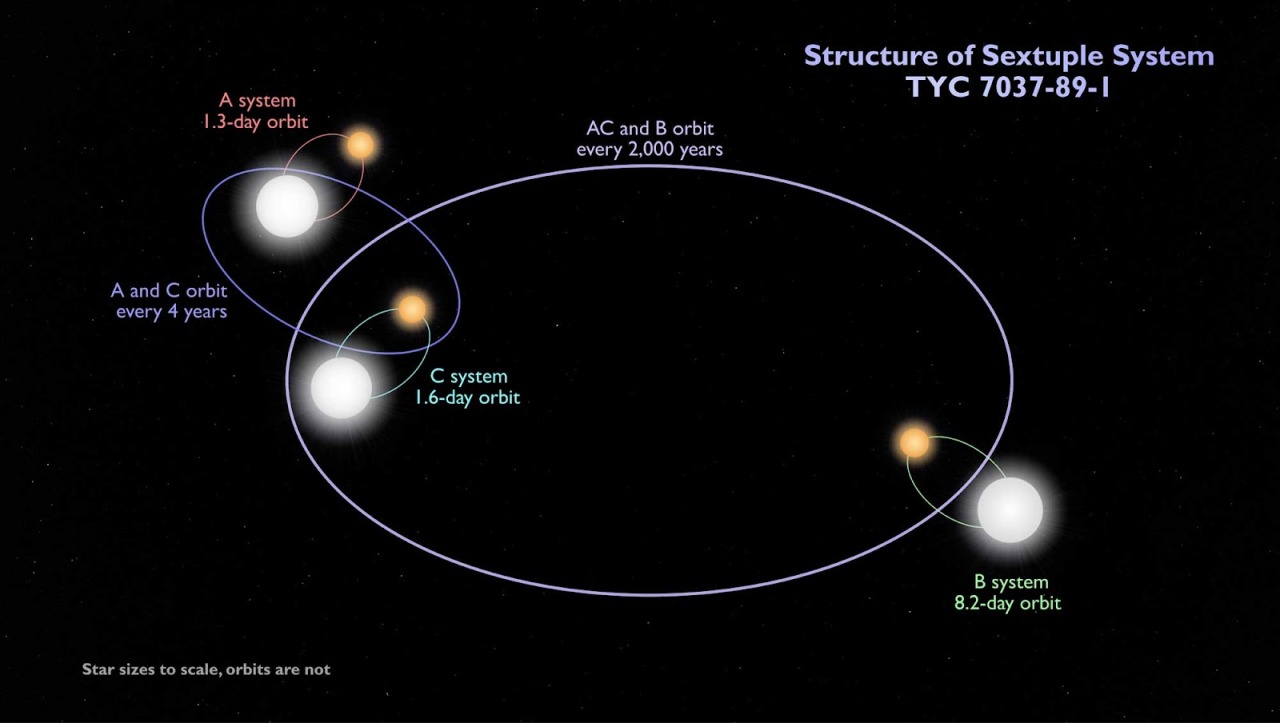
7. Thanks to TESS, we learned that Delta Scuti stars pulse to the beat of their own drummer. Most seem to oscillate randomly, but we now know HD 31901 taps out a beat that merges 55 pulsation patterns.
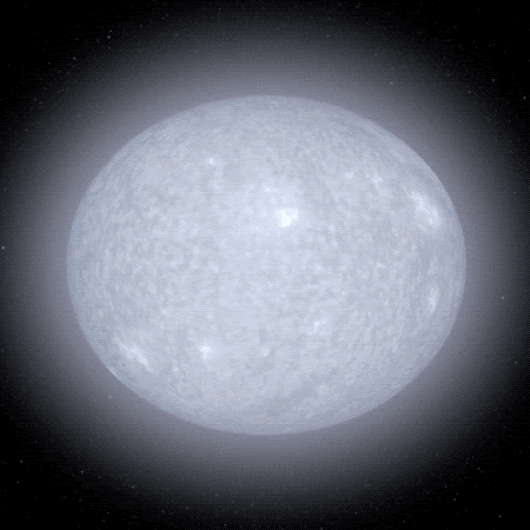
Sound waves bouncing around inside a star cause it to expand and contract, which results in detectable brightness changes. This animation depicts one type of Delta Scuti pulsation — called a radial mode — that is driven by waves (blue arrows) traveling between the star’s core and surface. In reality, a star may pulsate in many different modes, creating complicated patterns that enable scientists to learn about its interior. Credit: NASA’s Goddard Space Flight Center
8. Last is a galaxy that flares like clockwork! With TESS and Swift, astronomers identified the most predictably and frequently flaring active galaxy yet. ASASSN-14ko, which is 570 million light-years away, brightens every 114 days!
Make sure to follow us on Tumblr for your regular dose of space! spaceplanetsexoplanetssciencetechtechnologyastronomyastrophysicsstarsblack holesNASAspaceblr
https://assets.tumblr.com/assets/html/like_iframe.html?_v=66c22ab5319d742bca5762b8d18f9d06#name=nasa&post_id=714959518826741760&color=black&rk=EiGETEVg nasa
Constellations and the Calendar
Did you recently hear that NASA changed the zodiac signs? Nope, we definitely didn’t…
…Here at NASA, we study astronomy, not astrology. We didn’t change any zodiac signs, we just did the math. Here are the details:
First Things First: Astrology is not Astronomy…
Astronomy is the scientific study of everything in outer space. Astronomers and other scientists know that stars many light-years away have no effect on the ordinary activities of humans on Earth.
Astrology, meanwhile, is something else. It’s the belief that the positions of stars and planets can influence human events. It’s not considered a science.

Some curious symbols ring the outside of the Star Finder. These symbols stand for some of the constellations in the zodiac. What is the zodiac and what is special about these constellations?

Imagine a straight line drawn from Earth though the sun and out into space way beyond our solar system where the stars are. Then, picture Earth following its orbit around the sun. This imaginary line would rotate, pointing to different stars throughout one complete trip around the sun – or, one year. All the stars that lie close to the imaginary flat disk swept out by this imaginary line are said to be in the zodiac.

The constellations in the zodiac are simply the constellations that this imaginary straight line points to in its year-long journey.
What are Constellations?
A constellation is group of stars like a dot-to-dot puzzle. If you join the dots—stars, that is—and use lots of imagination, the picture would look like an object, animal, or person. For example, Orion is a group of stars that the Greeks thought looked like a giant hunter with a sword attached to his belt. Other than making a pattern in Earth’s sky, these stars may not be related at all.

Even the closest star is almost unimaginably far away. Because they are so far away, the shapes and positions of the constellations in Earth’s sky change very, very slowly. During one human lifetime, they change hardly at all.
A Long History of Looking to the Stars
The Babylonians lived over 3,000 years ago. They divided the zodiac into 12 equal parts – like cutting a pizza into 12 equal slices. They picked 12 constellations in the zodiac, one for each of the 12 “slices.” So, as Earth orbits the sun, the sun would appear to pass through each of the 12 parts of the zodiac. Since the Babylonians already had a 12-month calendar (based on the phases of the moon), each month got a slice of the zodiac all to itself.

But even according to the Babylonians’ own ancient stories, there were 13 constellations in the zodiac. So they picked one, Ophiuchus, to leave out. Even then, some of the chosen 12 didn’t fit neatly into their assigned slice of the pie and crossed over into the next one.

When the Babylonians first invented the 12 signs of zodiac, a birthday between about July 23 and August 22 meant being born under the constellation Leo. Now, 3,000 years later, the sky has shifted because Earth’s axis (North Pole) doesn’t point in quite the same direction.

The constellations are different sizes and shapes, so the sun spends different lengths of time lined up with each one. The line from Earth through the sun points to Virgo for 45 days, but it points to Scorpius for only 7 days. To make a tidy match with their 12-month calendar, the Babylonians ignored the fact that the sun actually moves through 13 constellations, not 12. Then they assigned each of those 12 constellations equal amounts of time.
So, we didn’t change any zodiac signs…we just did the math.
Did you recently hear that NASA changed the zodiac signs? Nope, we definitely didn’t…
What’s Up For September 2018?
Outstanding views Venus, Jupiter, Saturn and Mars with the naked eye!
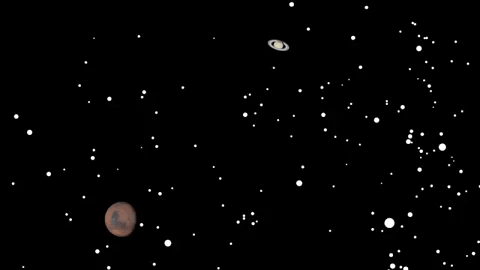
You’ll have to look quickly after sunset to catch Venus. And through binoculars or a telescope, you’ll see Venus’s phase change dramatically during September – from nearly half phase to a larger thinner crescent!

Jupiter, Saturn and Mars continue their brilliant appearances this month. Look southwest after sunset.
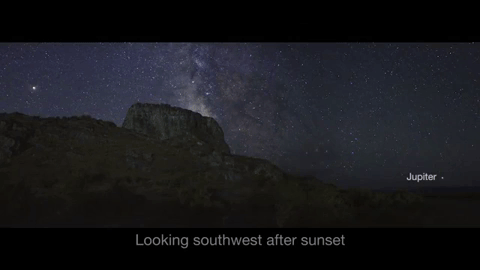
Use the summer constellations help you trace the Milky Way.
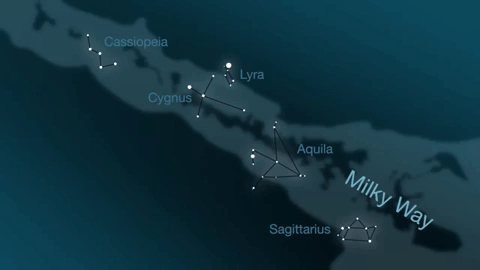
Sagittarius: where stars and some brighter clumps appear as steam from the teapot.
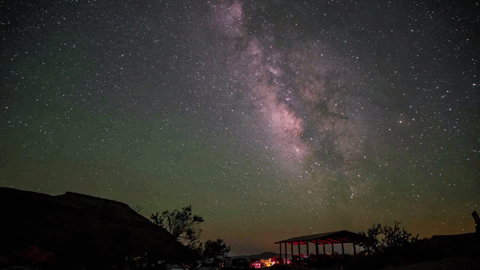
Aquila: where the Eagle’s bright Star Altair, combined with Cygnus’s Deneb, and Lyra’s Vega mark the Summer Triangle.
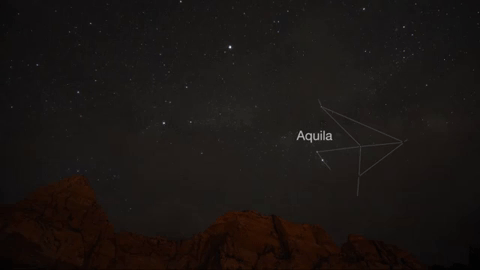
Cassiopeia, the familiar “w”- shaped constellation completes the constellation trail through the Summer Milky Way. Binoculars will reveal double stars, clusters and nebulae.
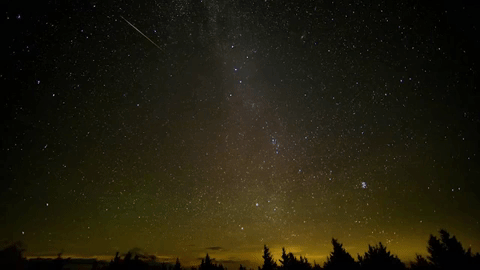
Between September 12th and the 20th, watch the Moon pass from near Venus, above Jupiter, to the left of Saturn and finally above Mars!
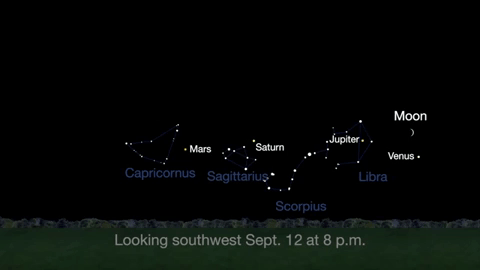
Both Neptune and brighter Uranus can be spotted with some help from a telescope this month.
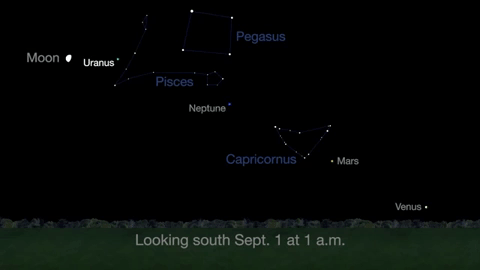
Look at about 1:00 a.m. local time or later in the southeastern sky. You can find Mercury just above Earth’s eastern horizon shortly before sunrise. Use the Moon as your guide on September 7 and 8th.
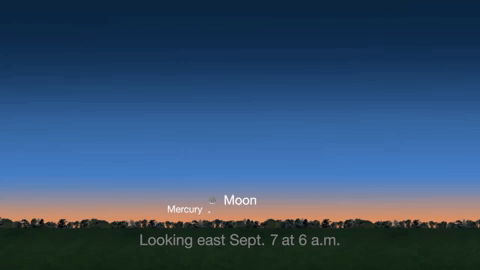
And although there are no major meteor showers in September, cometary dust appears in another late summer sight, the morning Zodiacal light. Try looking for it in the east on moonless mornings very close to sunrise. To learn more about the Zodiacal light, watch “What’s Up” from March 2018.
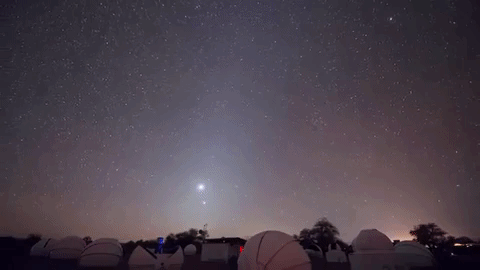
Watch the full What’s Up for September Video:
https://safe.txmblr.com/svc/embed/inline/https://youtu.be/rsIhsYO8MLM#embed-6459231e9854a160464553-partied
There are so many sights to see in the sky. To stay informed, subscribe to our What’s Up video series on Facebook.
Make sure to follow us on Tumblr for your regular dose of space: http://nasa.tumblr.com
nasawhatsupseptemberjplconstellationsspacestarsplanetsvenusneptunejupiteruranusmoonskywatcherastronomyCassiopeiamilkywaysaturnsummertriangle
Cosmic Piece of Pi!
Did you know that pi is involved nearly anywhere you look? We’re not talking about your favorite pastry! Pi (also written as the Greek letter 𝞹, or the number 3.14159…) is an irrational number, which means it can’t be written as a simple fraction like ½. It is the ratio of a circle’s circumference (the distance around its edge) to its diameter (the distance across it) and will always be the same number, regardless of the circle’s size. Here are some places you can find pi in the universe around us!
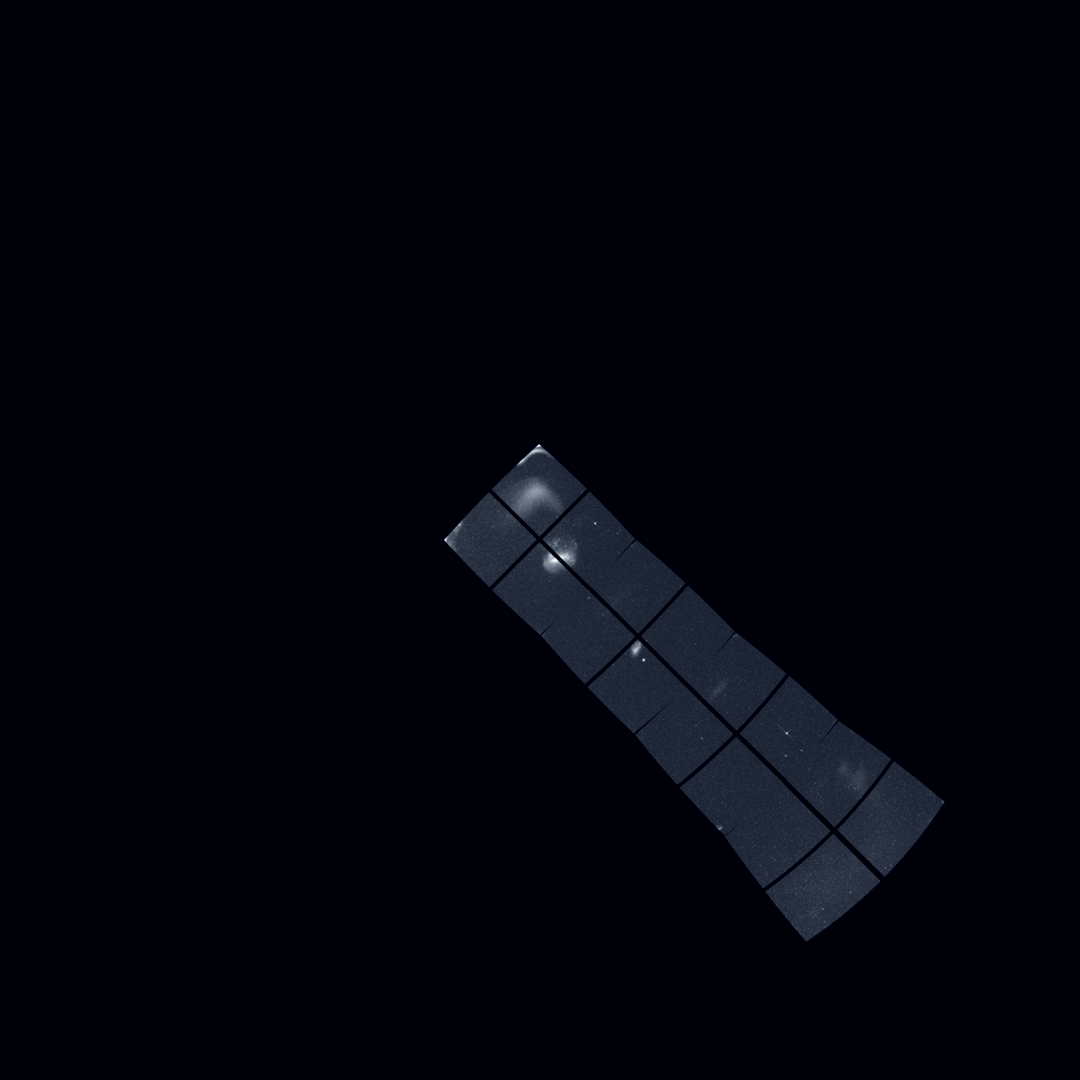
Our Transiting Exoplanet Survey Satellite, TESS, watches slices of the sky in its hunt for worlds outside our solar system — how many exoplanets are in its night-sky pie? Last July, TESS scientists created a mosaic of 208 images of the southern sky. At that time, it contained 29 confirmed and 1,000 possible exoplanets, and we’re still studying the data to find more. Since this awe-inspiring image is of the southern hemisphere (or half of a 3D circle), there will always be pi! Every slice contains something delicious for scientists to study.
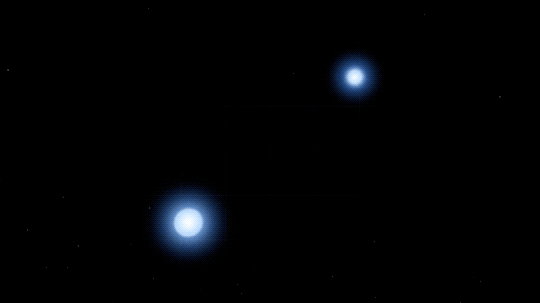
Pi recently played a crucial role in new discoveries about Alpha Draconis, a well-studied pair of stars. After discovering these stars regularly eclipse each other, pi helped scientists learn more about them. Scientists detected the eclipses while monitoring the brightness of Alpha Draconis for periodic dips that could’ve been caused by planets passing between the star and us. Instead of a planet, though, researchers found that its smaller partner in crime was passing in between us and the larger star for about six hours at a time! 💫
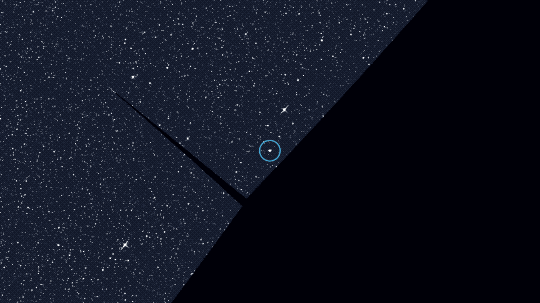
Pi comes in handy as we learn more about these two stars. Knowing the percentage of the decrease in Alpha Draconis’ light and the formula for the area of a circle (A=𝞹r2 — or area equals pi times the square of the circle’s radius), scientists can predict the sizes of both stars. Because stars typically orbit in an elliptical (or oval) shape, pi also helps scientists use the detection of these eclipses to figure out the orbits of the two stars!
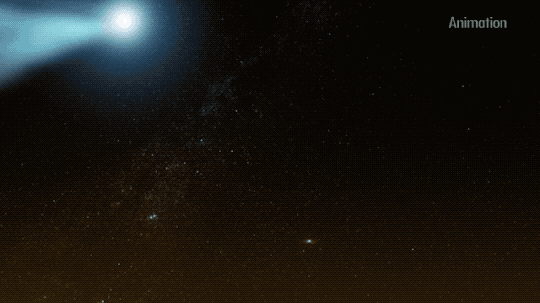
So far we’ve seen pi in many places! But it’s also interesting to look at where pi can’t be found! We mentioned earlier that many orbit calculations involve pi … but not every one does! Pi does not factor into calculations of hyperbolic orbits — orbits that aren’t complete, or don’t return to where they started — the same way that it does with elliptical orbits! This is most commonly seen with comets. While many comets orbit normally in our solar system, some oddballs just pass through, like the interstellar ‘Oumuamua that zipped passed us in 2017. ☄️

Perhaps the most popular place you may find pi is in the shape of a typical pie! While NASA’s Fermi Gamma-ray Space Telescope studies gamma-rays, and not blueberries, we think this cool Fermi pie is worth sharing for Pi Day!
Find more ways scientists look up at the night sky and use pi here. And now, don’t be irrational, and go have some pi(e)! 🥧
Make sure to follow us on Tumblr for your regular dose of space: http://nasa.tumblr.com
NASAspacesciencepipi daystarsbinary starssolar systemastronomyspace scienceFermipieTESSspace telescopesspace pictures
Rockets, Racecars, and the Physics of Going Fast

When our Space Launch System (SLS) rocket launches the Artemis missions to the Moon, it can have a top speed of more than six miles per second. Rockets and racecars are designed with speed in mind to accomplish their missions—but there’s more to speed than just engines and fuel. Learn more about the physics of going fast:
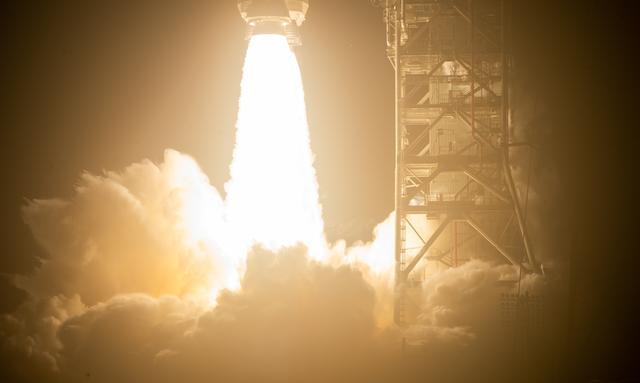
Take a look under the hood, so to speak, of our SLS mega Moon rocket and you’ll find that each of its four RS-25 engines have high-pressure turbopumps that generate a combined 94,400 horsepower per engine. All that horsepower creates more than 2 million pounds of thrust to help launch our four Artemis astronauts inside the Orion spacecraft beyond Earth orbit and onward to the Moon. How does that horsepower compare to a race car? World champion race cars can generate more than 1,000 horsepower as they speed around the track.
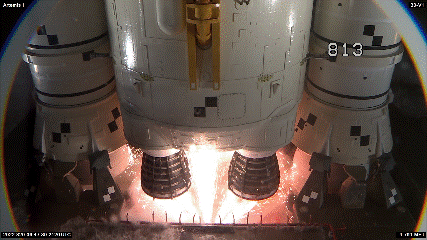
As these vehicles start their engines, a series of special machinery is moving and grooving inside those engines. Turbo engines in race cars work at up to 15,000 rotations per minute, aka rpm. The turbopumps on the RS-25 engines rotate at a staggering 37,000 rpm. SLS’s RS-25 engines will burn for approximately eight minutes, while race car engines generally run for 1 ½-3 hours during a race.
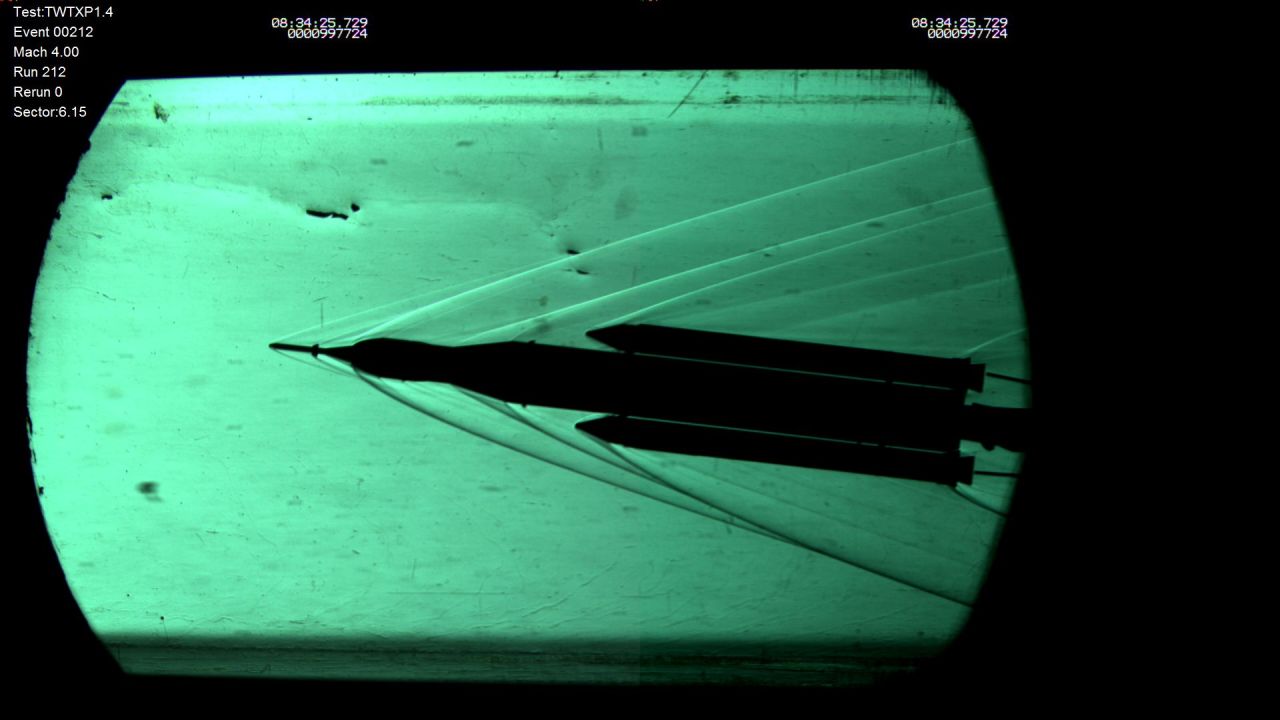
To use that power effectively, both rockets and racecars are designed to slice through the air as efficiently as possible.
While rockets want to eliminate as much drag as possible, racecars carefully use the air they’re slicing through to keep them pinned to the track and speed around corners faster. This phenomenon is called downforce.

Steering these mighty machines is a delicate process that involves complex mechanics.
Most race cars use a rack-and-pinion system to convert the turn of a steering wheel to precisely point the front tires in the right direction. While SLS doesn’t have a steering wheel, its powerful engines and solid rocket boosters do have nozzles that gimbal, or move, to better direct the force of the thrust during launch and flight.
Racecar drivers and astronauts are laser focused, keeping their sights set on the destination. Pit crews and launch control teams both analyze data from numerous sensors and computers to guide them to the finish line. In the case of our mighty SLS rocket, its 212-foot-tall core stage has nearly 1,000 sensors to help fly, track, and guide the rocket on the right trajectory and at the right speed. That same data is relayed to launch teams on the ground in real time. Like SLS, world-champion racecars use hundreds of sensors to help drivers and teams manage the race and perform at peak levels.
Knowing how to best use, manage, and battle the physics of going fast, is critical in that final lap. You can learn more about rockets and racecars here.
Make sure to follow us on Tumblr for your regular dose of space! NASAArtemisMoonSpace Launch Systemrocket sciencespaceexplorationMoon 2024rocket testingracecartechtechnologymotorsport
Show more https://assets.tumblr.com/analytics.html?_v=9f5febfd57a8a649c598d888f2d9e062#https://nasa.tumblr.com

Leave a Reply
You must be logged in to post a comment.